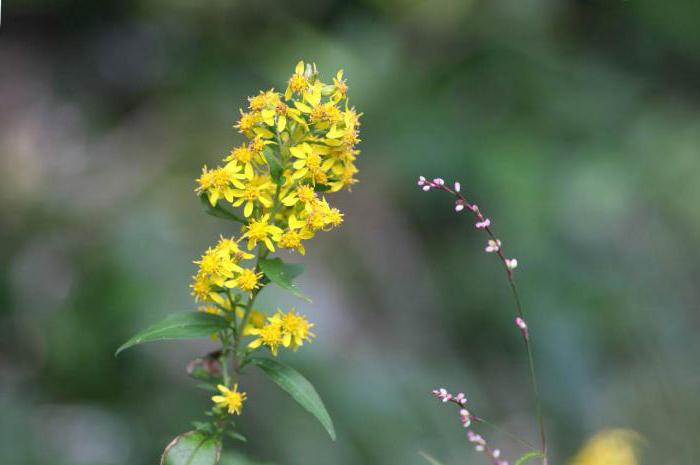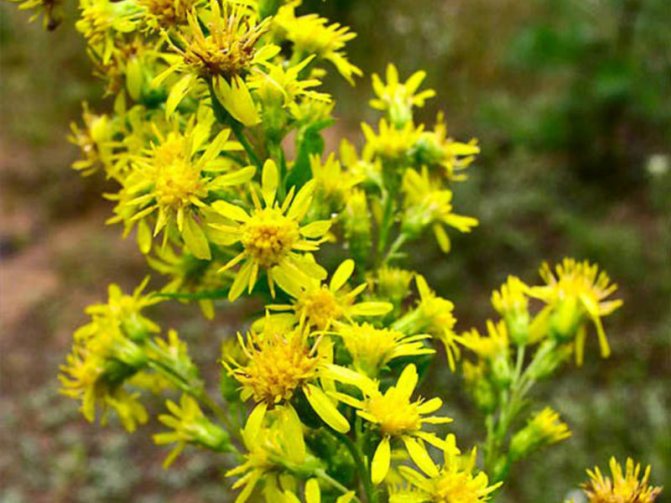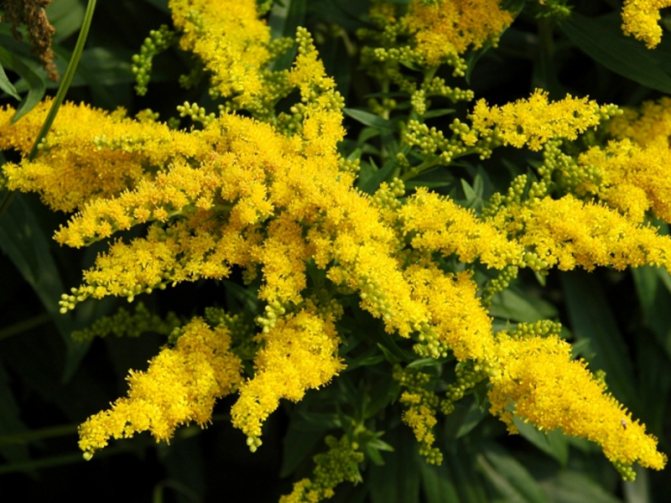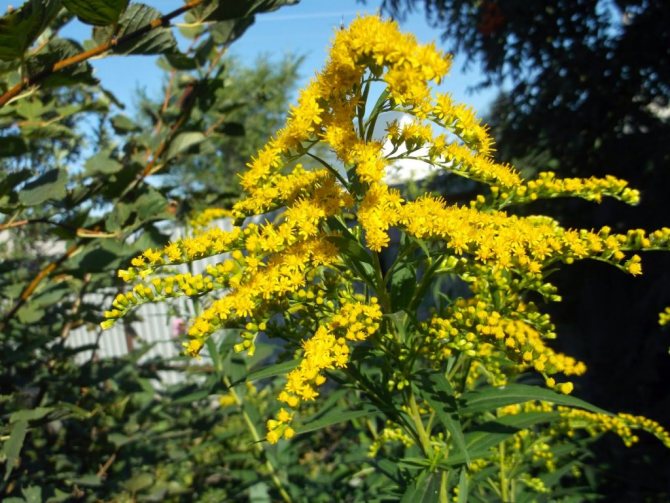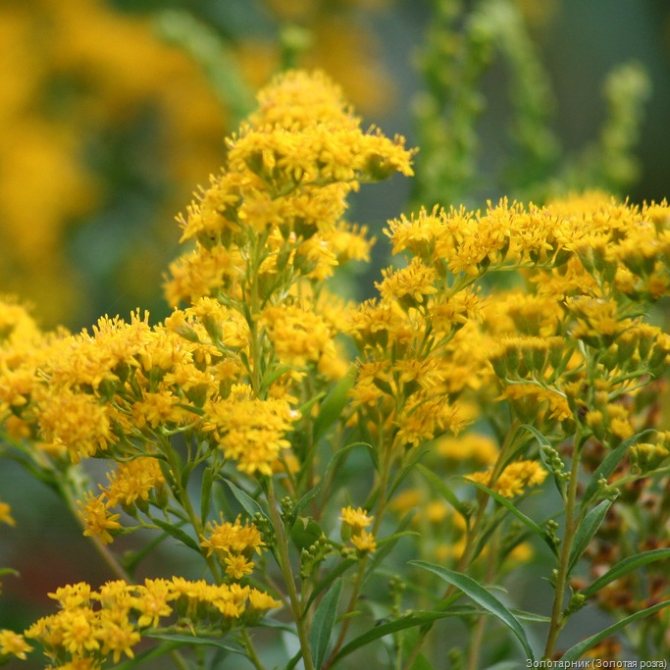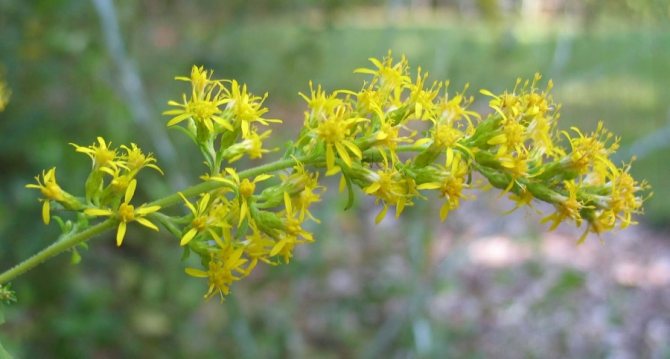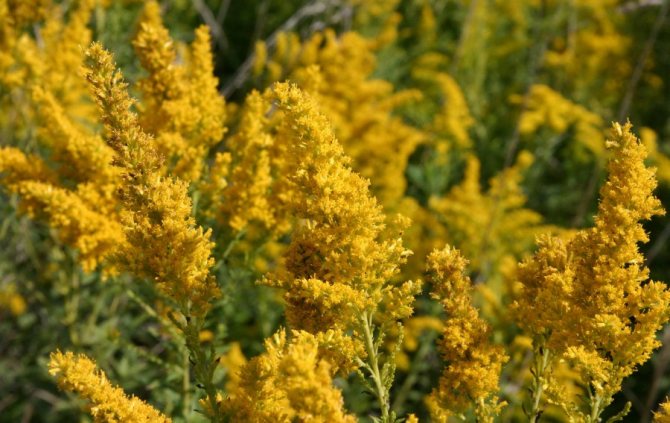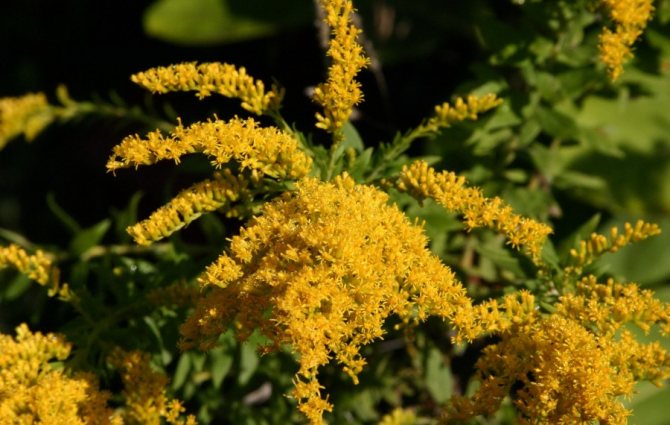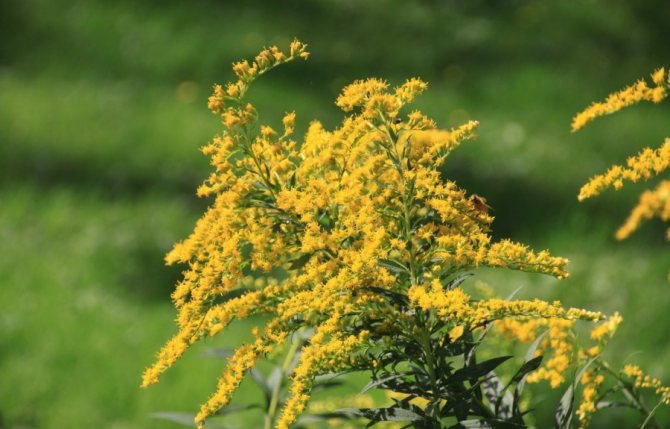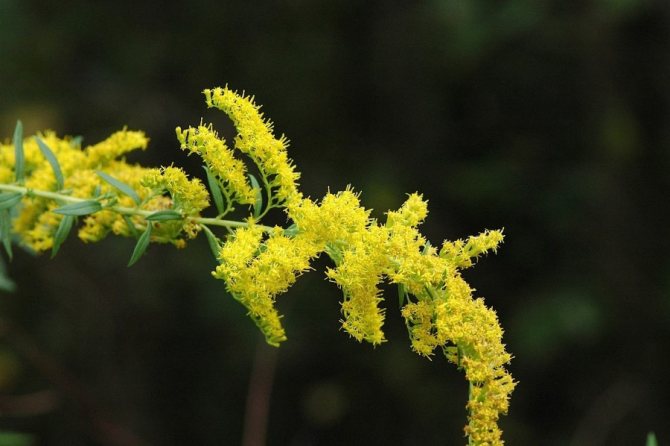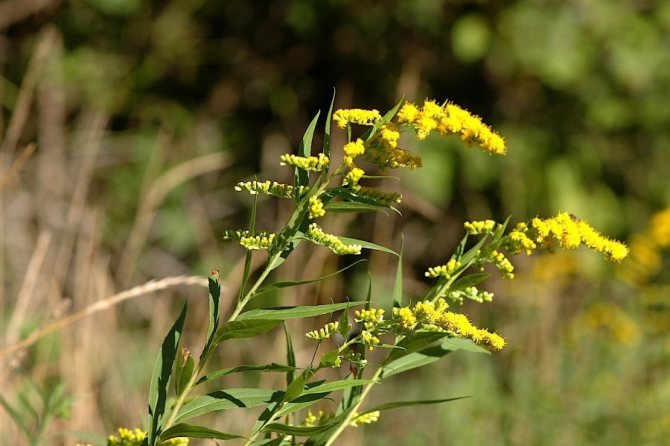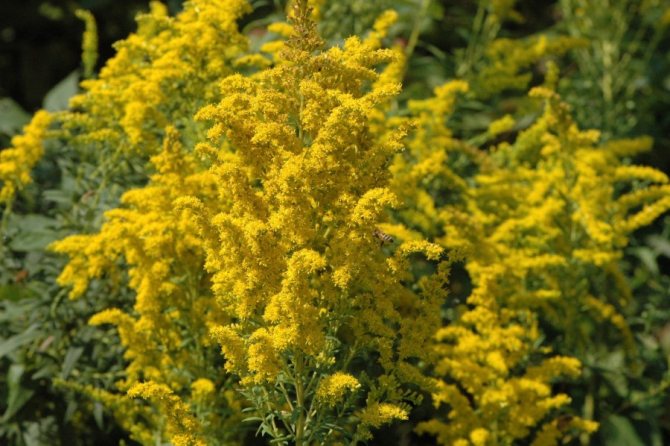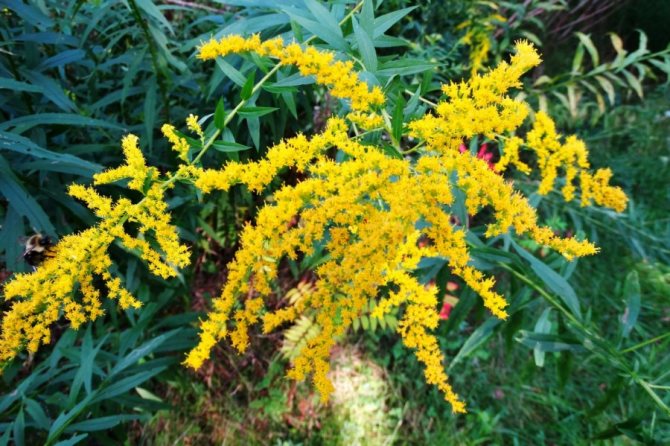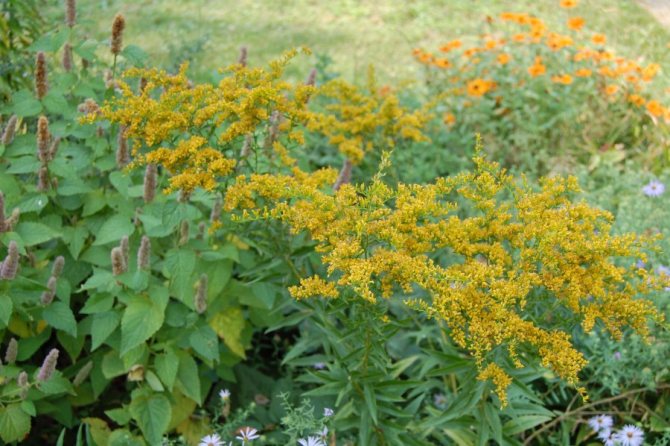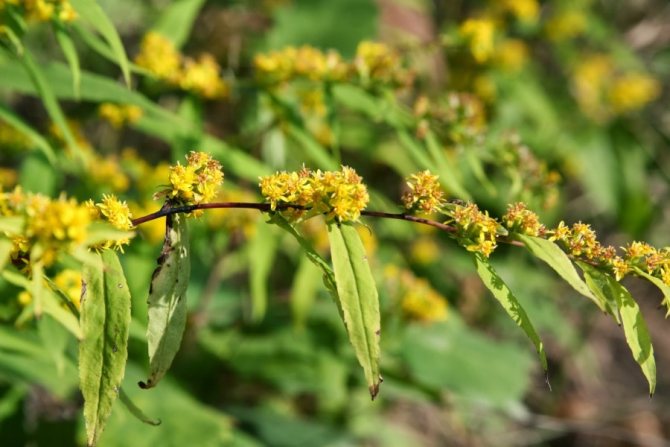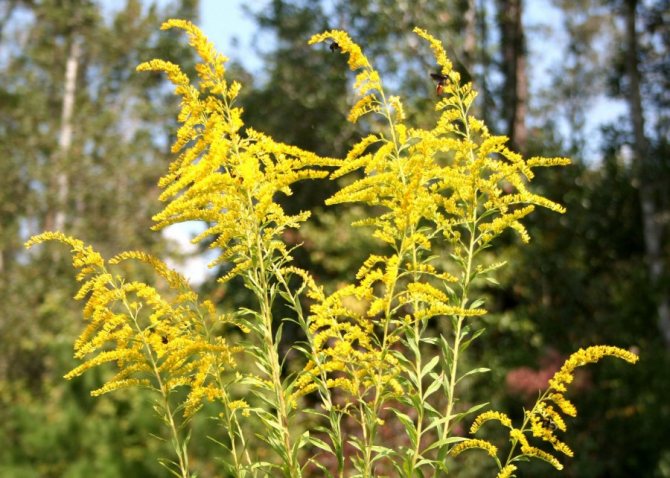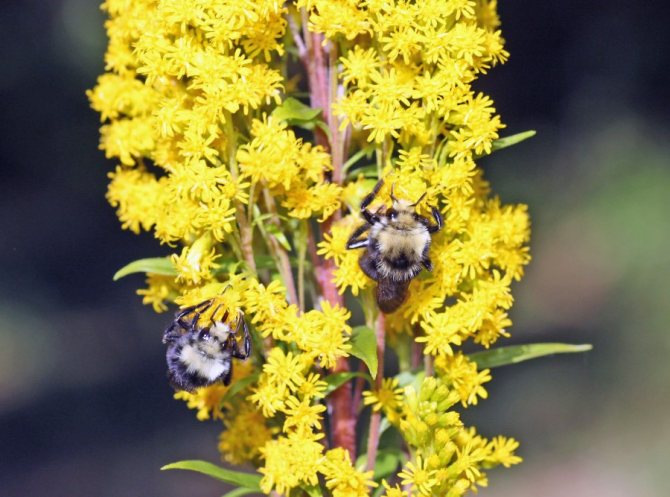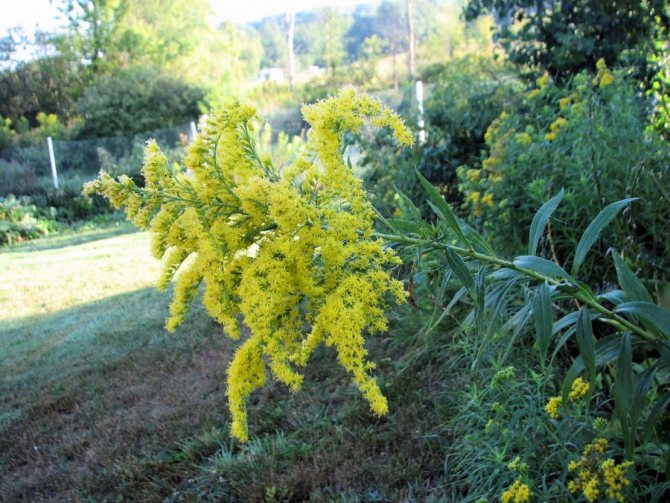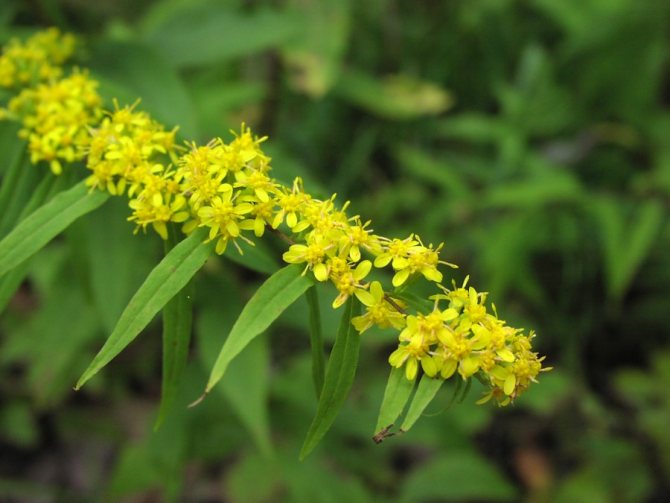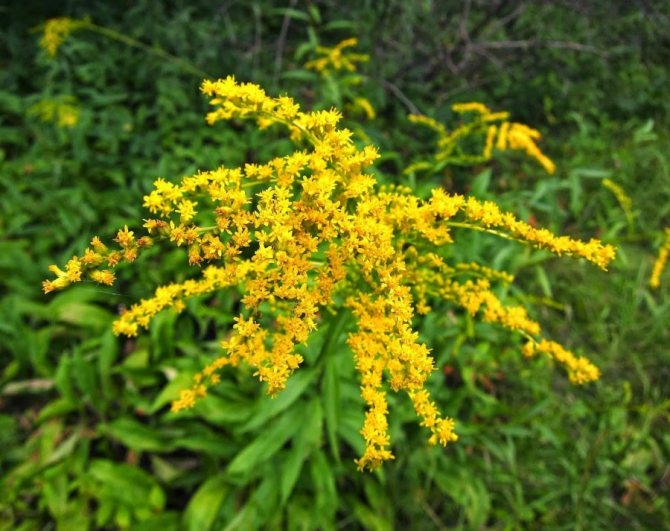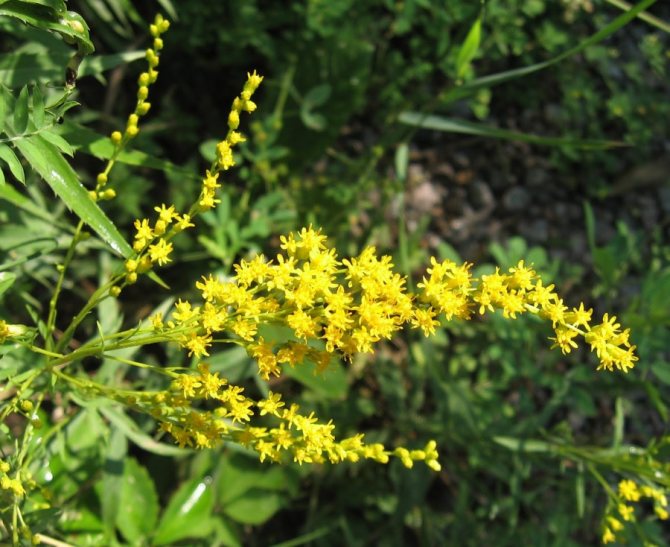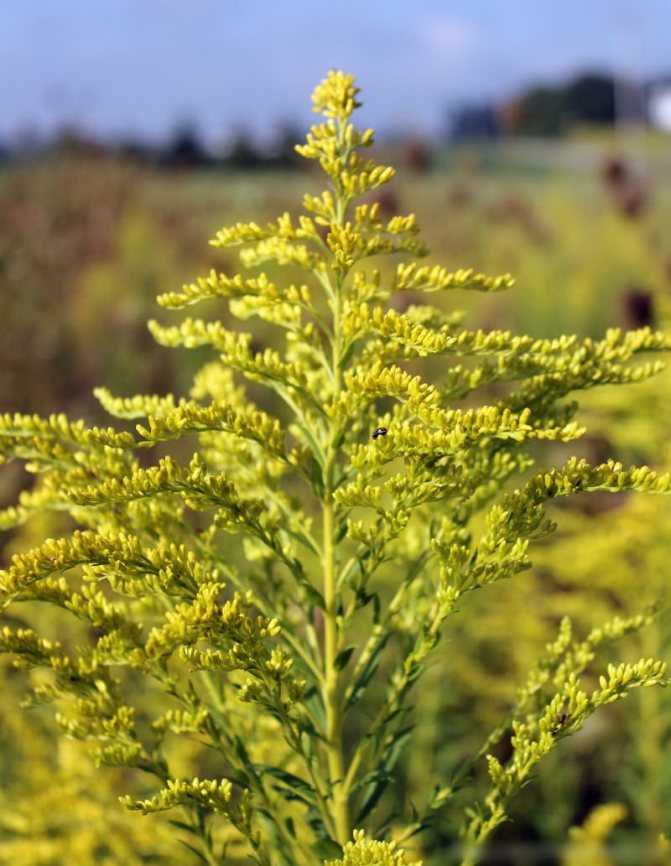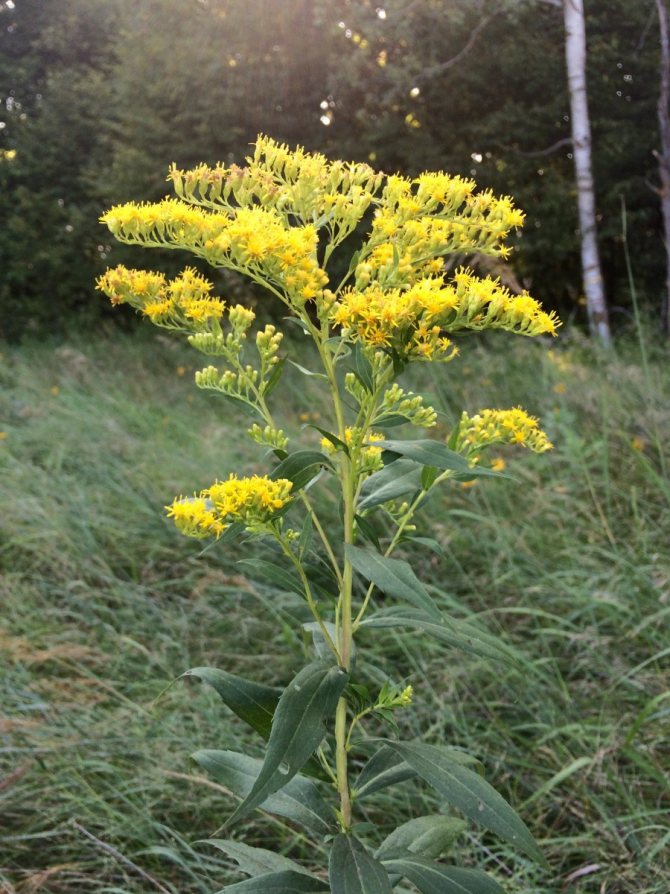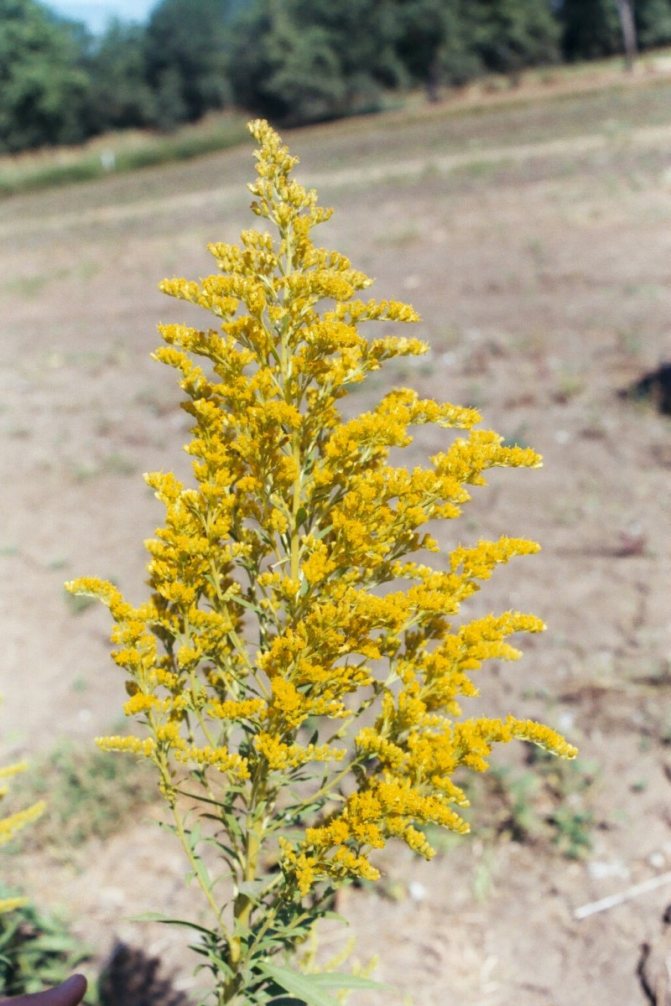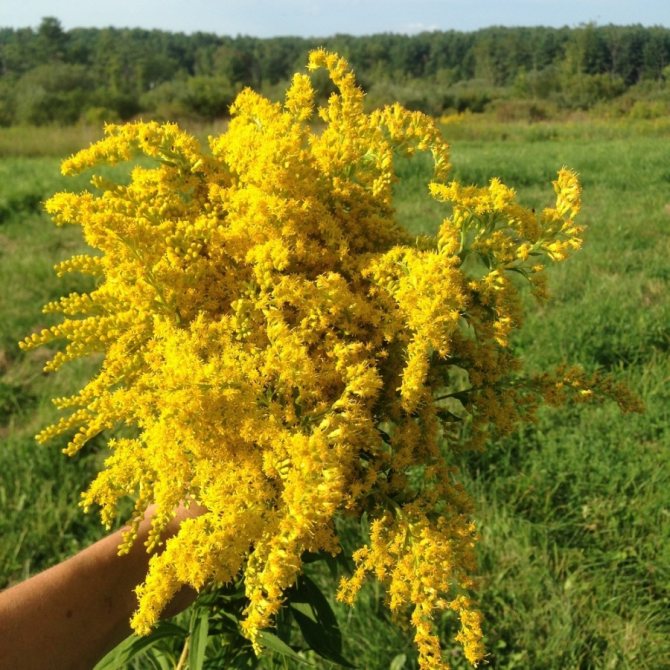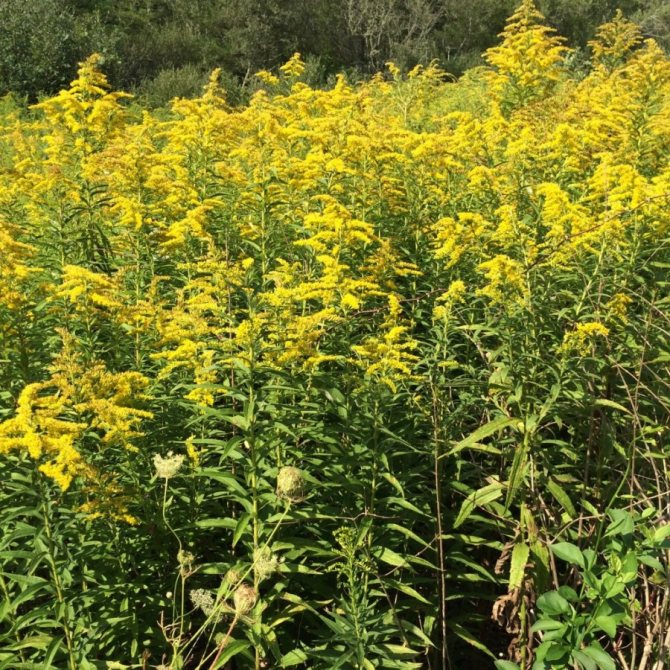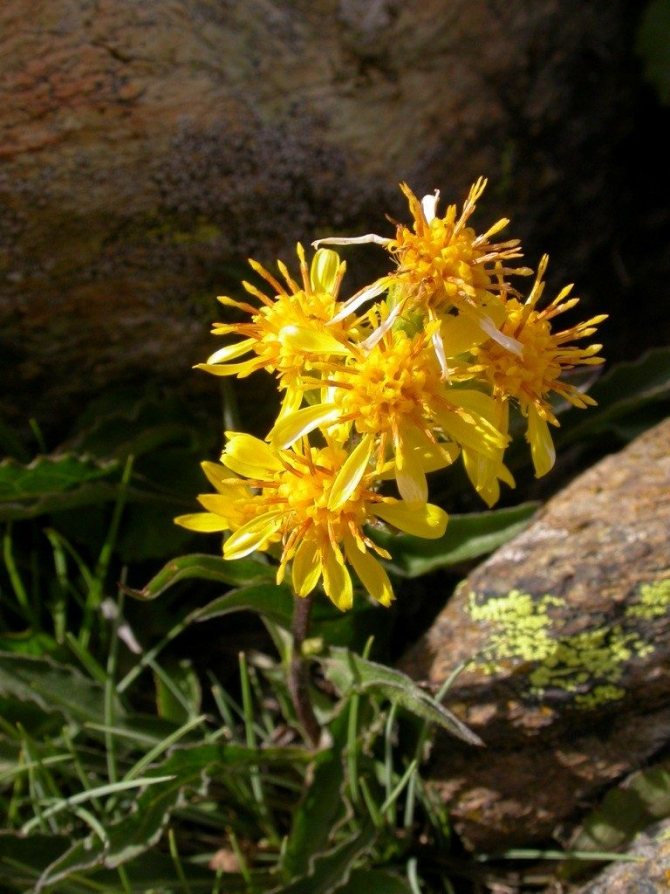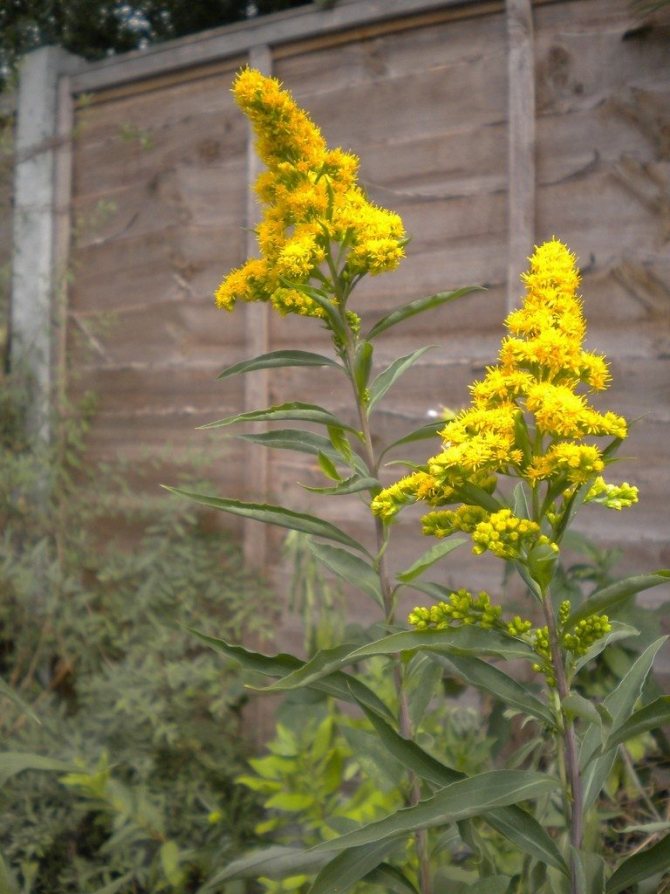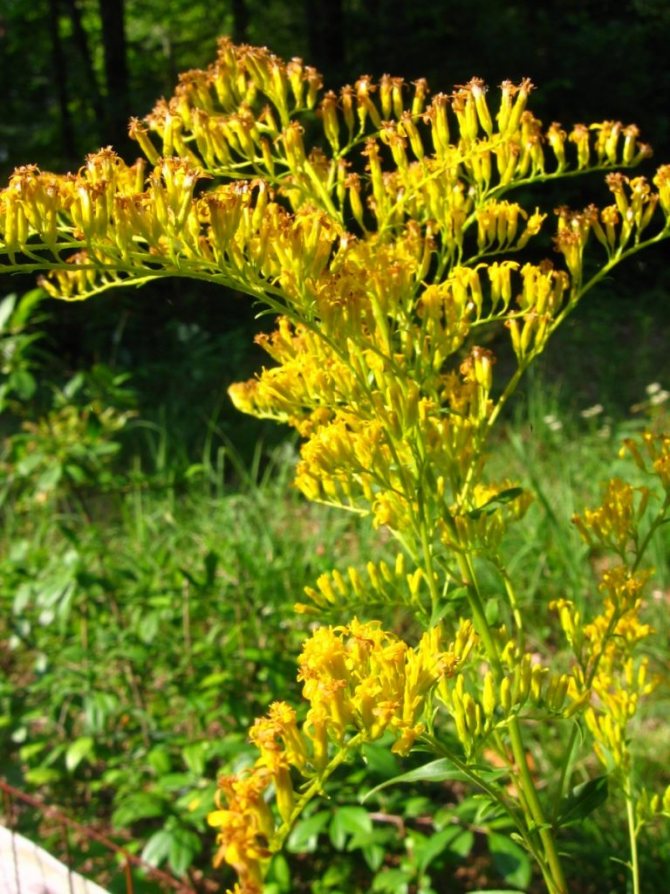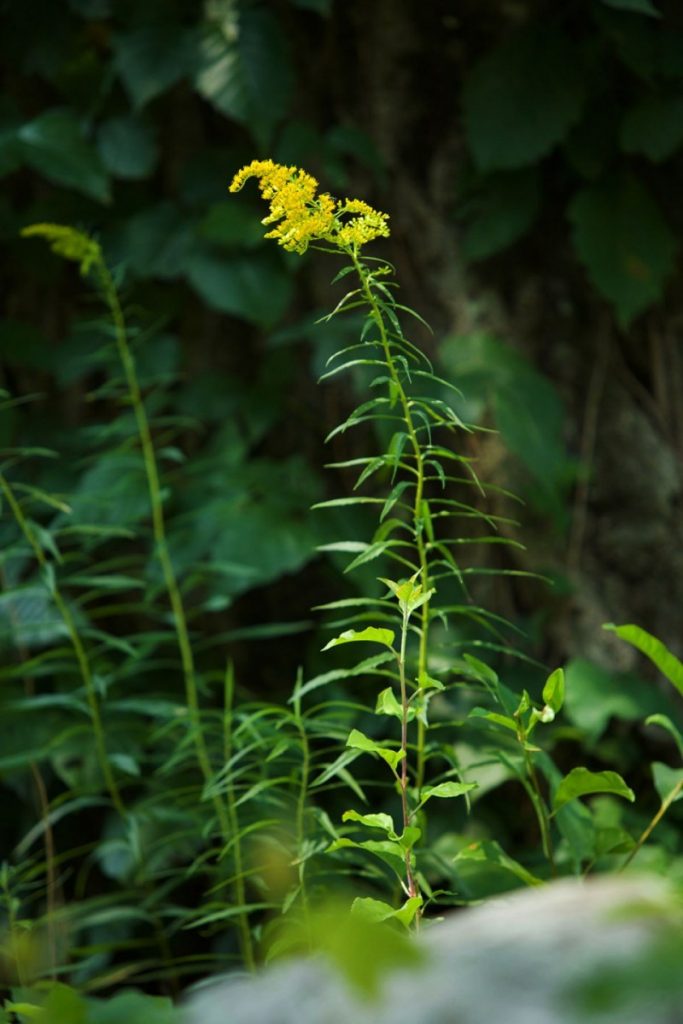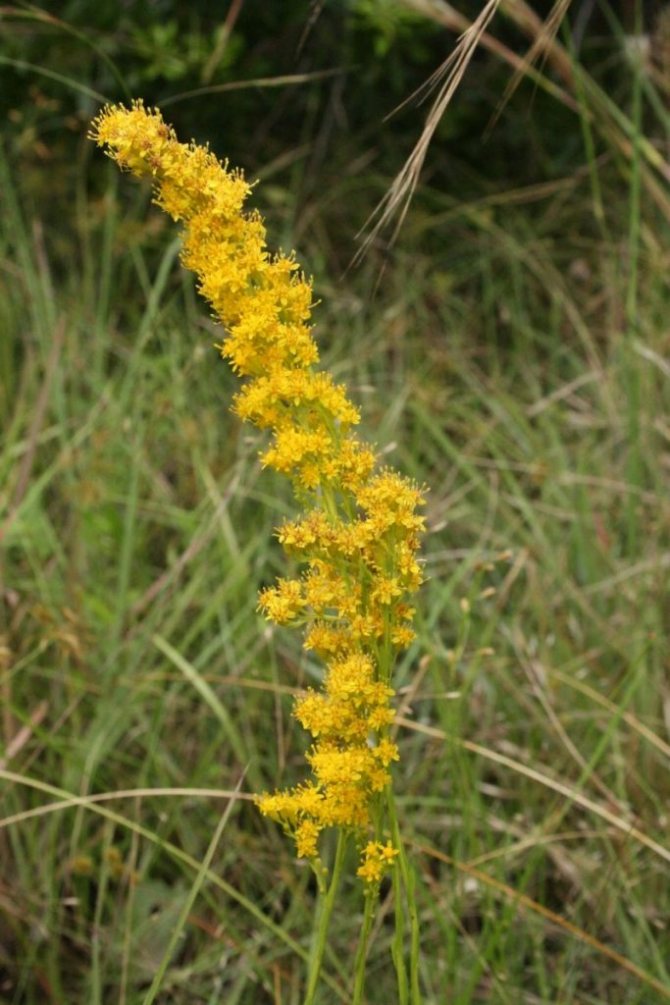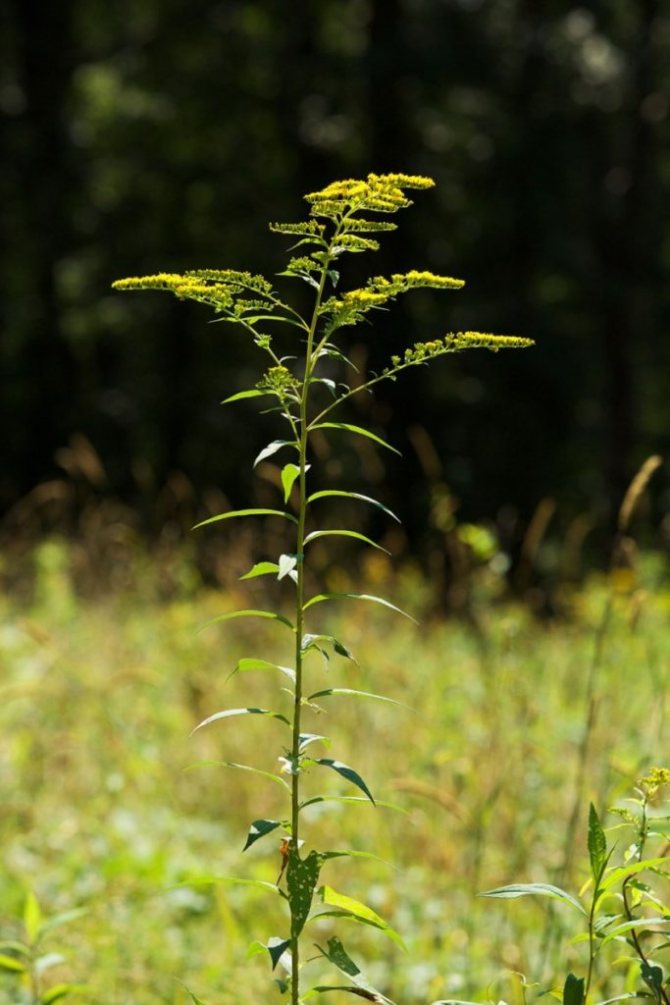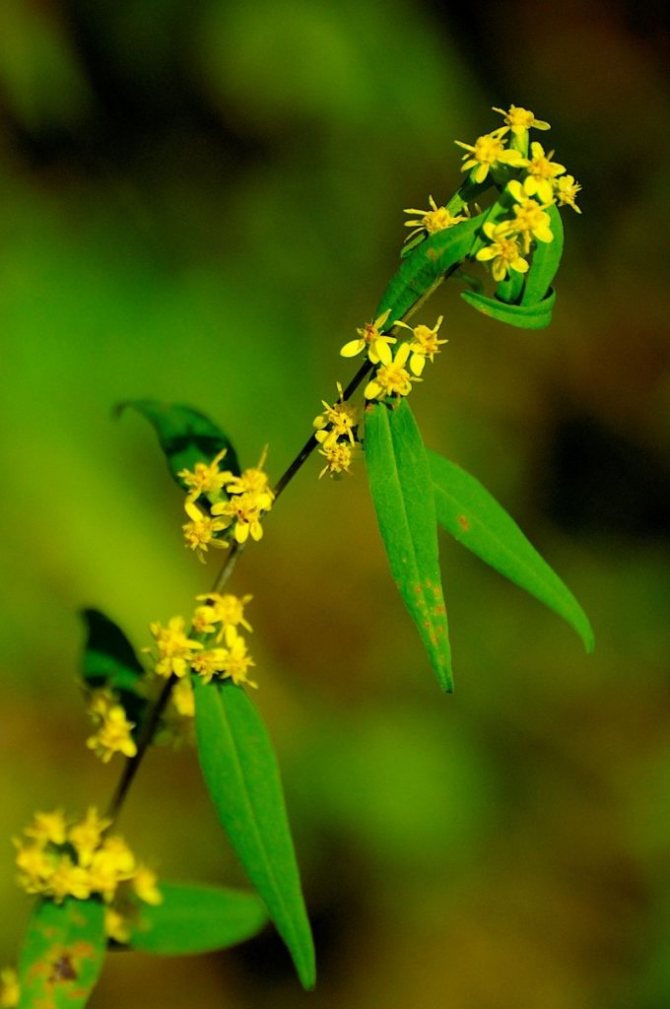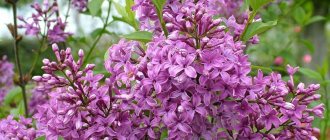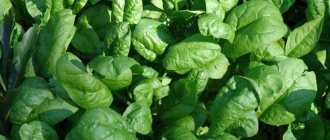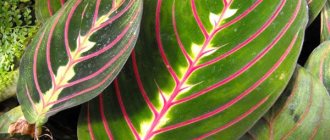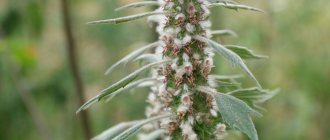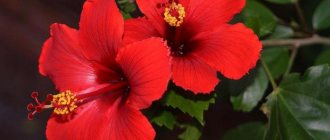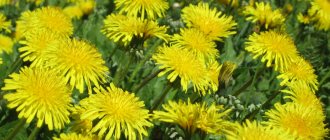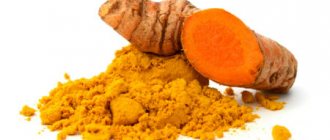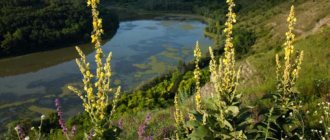Goldenrod is a conspicuous and fragrant herb belonging to the Astrov family. Prefers a temperate climate, grows throughout Eurasia. The culture attracts attention with its magnificent fragrant flowers and has healing properties. In natural and home gardens, some space should be left for these wild herbaceous perennials, where they can demonstrate their charm without the pressure of other plantings that are too high.
Goldenrod is used in landscape design. Together with lower or taller ornamental grasses and open field ferns, goldenrod creates a harmonious picture. Also grown as a medicinal herb.
Goldenrod is a herb that has many synonymous names: solidago, golden rod, scrofula, iron ore, bone elm.
Caring for it is simple, but given that the plant quickly spreads throughout the territory, a vast area of land is required for cultivation.
Goldenrod: The powerful healing power of a poisonous herb. How to avoid mistakes when using
Goldenrod (Solidágo) is a genus of herbaceous perennials from the Asteraceae family. Many of its representatives are medicinal plants, hence the scientific name of the whole genus: "solidus" in Latin means healthy. And today we want to tell you about the amazing properties of this natural gift, as well as how to use it correctly so as not to harm your health.

In addition to medicinal substances, the composition of goldenrod also includes poisonous ones, and therefore, when using it, you should always strictly adhere to the dosage
Soil for goldenrod
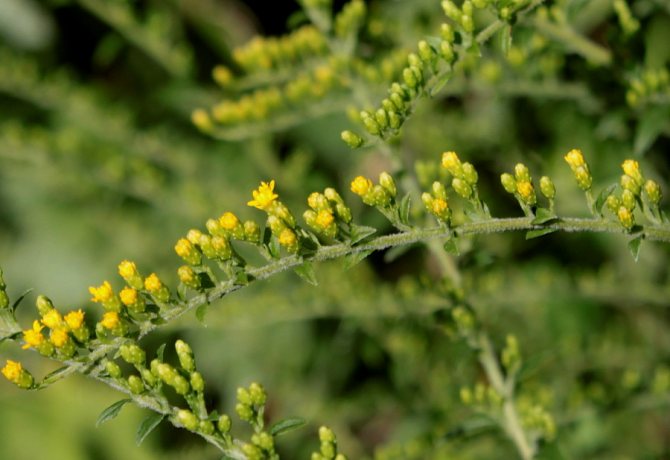

Careful attention must be paid to the care of the soil. Good soil in the garden is a prerequisite for the development of a perennial herb. Adequate nutrient supply should be ensured by using commercially available compost and organic fertilizers.
Goldenrod grows well in moist, fertile soil, and if fertilizers are used, it will develop on poorer soil. It is necessary to improve the soil, since in specimens growing on poor soil, the flowers are less beautiful. The soil is improved by compost, which ensures the formation of humus, enriches the soil with nutrients, and increases the ability to accumulate moisture.
Description and types
The genus of plants called goldenrod includes several species, and below we will consider a photo and description of the most common of them.
Supreme
Goldenrod is the tallest native to North America. It can be found in desert areas, on the prairies among tall grassy thickets, in forest glades and wet meadows, as well as on road shoulders. And despite the fact that plants belonging to this species, for the most part, grow in wooded areas, they are intolerant of shady areas.
You can recognize the highest goldenrod by its pubescent straight stems and whole simple foliage. The height of the stem can reach 1.8 m. The inflorescences are colored lemon-yellow, in the form of baskets, which consist of small (about 2-3 mm) flowers collected in tassels. The length of one such inflorescence is about 35 cm. The flowering period occurs in August and lasts about a month and a half.
Goldenrod hybrid is a species that unites a fairly large part of hybrid varieties. And the main one among them is the Canadian goldenrod, which is also considered to be home to North America.
The homeland of the Daurian goldenrod is Siberia. You can find a plant of this species in meadows and forests, as well as on rocky slopes and pebbles.
In height, this plant barely reaches 1 m. Its stem is simple, strong, only the inflorescence is branched. Stem leaves have short petioles, while those located in the root area have long petioles. The leaf plate can be oblong, lanceolate or ovoid.
Wrinkly
Goldenrod rugosa is another native of North America. You can find it in swampy areas, in bogs, among wet meadows and on roadsides.
Goldenrod wrinkled has a smooth straight stem, the height of which is about 2 m. The shoots are colored reddish-brown, the rhizome is creeping. The leaves are oblong-oval, with denticles along the edges. Leaves are located throughout the stem except for the root area.
Ordinary
Common goldenrod (Solidago virgaurea), or golden branch, or golden rod, is a herbaceous perennial plant, the height of which can be from 0.3 to 1 m.The stem is pubescent and weakly leafy, branched only in the upper part, may have a reddish tint. The rhizome is pivotal, woody and short. The leaves are pointed, ovate or oval, serrated at the edges; located in the lower part of the stem - on petioles, in the central part and at the top - sessile and smaller. Inflorescences are paniculate or racemose, each with several baskets, consisting of small bright yellow flowers.
The flowering period of common goldenrod begins in July and lasts until September, after which fruits appear on the tops of the stems in the form of achenes with a tuft. The fruit has a cylindrical shape, ribbed. Fruit formation ends in October.
The golden rod grows on the territory of European countries, in Central Asia, Scandinavia, the Mediterranean, as well as in the Caucasus and in the western part of Siberia. Found in the European part of Russia.
Common goldenrod is famous for its beneficial properties. Its aerial part acts as a medicinal raw material: more often the upper parts of the stems, leaves and inflorescences, less often rhizomes.
Good to know! Grass is harvested during the flowering period of the plant - from July to September, the rhizomes are harvested exclusively in autumn. Dried by collecting in bunches and hanging in the shade or in a draft. Raw materials, ready for use, have a bitter taste and a pronounced spicy aroma.
To date, the medicinal properties of common goldenrod have not been fully studied, but at the same time it was possible to establish quite a lot. And this was facilitated by information regarding the chemical composition of this plant.
- flavonoids - rutin, camperol, quercetin, etc.;
- acids - organic, ascorbic, nicotinic, phenolcarboxylic;
- tannins;
- bitterness;
- saponins;
- coumarins;
- essential oils;
- traces of alkaloids;
- resin.
The roots of this plant contain inulin, fruits - fatty oils, inflorescences - galactose, arabinose, glucose, xylose and carbohydrates.
Description of the plant


Goldenrod is a perennial brush-rhizome herbaceous plant. The elongated, oblong strong root of the plant goes deep into the ground. On the surface, one can see a simple branchy shoot, up to 100 cm high. The satiny bark covers the straight stem of the goldenrod. It can be emerald or crimson.
The bright green leaves of the herb goldenrod are oval or ovoid in shape, with small serrations along the edges, sawtooth. The lower narrow leaves are more elongated than the upper ones. The narrow leaves of goldenrod resemble willow leaves.
Common goldenrod blooms from May to September.The inflorescences consist of bell-shaped buds, lemon-colored. The flowers are up to 8 mm long. Bells with lemon-colored petals grow along the edges, and in the center they are distinguished by chestnut-yellow colors. The fruit formed after pollination is an achene, shaped like a cylinder with longitudinal ribs, up to 4 mm long.
Goldenrod herb is an aggressor plant: one specimen gives up to 100 thousand seeds, germination rate is 95%. In a year, it can move dozens of kilometers, is a full-fledged owner in those territories where he settled.
Goldenrod is used in many industries. Used in veterinary medicine as an astringent. In an industrial way, yellow and brown paints are extracted from goldenrod. The goldenrod plant is highly valued for its beneficial properties and is used in folk medicine.
Botanical characteristics of goldenrod
Goldenrod is an exceptional perennial plant. It has a straight, strong stem up to 1 m high, longitudinal, of uniform thickness, crowned with a gorgeous brush of golden flowers. Lemon-colored flowers have a subtle delicate aroma. Inflorescences are baskets. Goldenrod leaves are alternate, strong branching. Blooms from late summer to October. The goldenrod fruit is a cylinder-shaped achene, approximately 3 mm long. Ignorant people sometimes confuse goldenrod with garden mimosa.
Positive effect on the body
The golden rod, if used correctly, can be of great benefit. Among the properties of this herb:
- wound healing;
- antibacterial;
- diuretic;
- choleretic;
- pain reliever;
- anti-inflammatory;
- astringent;
- expectorant;
- fortifying.
Thus, the use of common goldenrod may be quite justified in the treatment of various diseases. So, this herb helps to clear the lungs of phlegm and thus relieve a coughing attack with bronchitis. With the help of the preparations of this plant, you can also significantly alleviate the condition with asthma and contribute to a speedy recovery from pulmonary tuberculosis.
The herb of the golden rod shows very good results in the treatment of inflammatory processes of the gallbladder, as well as in stagnation of bile. Moreover, the pain syndrome in such conditions is removed already on the first day of therapy. In addition, goldenrod remedies are often prescribed when it is necessary to remove sand from the kidneys, relieve swelling, and cure involuntary urination and pyelonephritis. For conditions associated with kidney and gallbladder dysfunction, alcohol tincture is usually used. Also, goldenrod preparations show a fairly high efficiency in edema that arose against the background of heart disease.
On a note! Goldenrod preparations are so good at removing excess fluid from the body that often such complex conditions as swelling of internal organs and even the brain become indications for their use!
Related article: Field calendula - useful properties, description
Goldenrod can be very beneficial for diabetes as well. It improves the course of metabolic processes and helps to normalize blood glucose levels. Moreover, this property can be used not only in diabetes, but also simply when the hanging of sugar is noted.
The healing properties of common goldenrod become relevant for digestive disorders. Thanks to their astringent effect, herbal preparations quickly stop diarrhea, and at the same time, the cause that caused the problem is eliminated. As a result, pathogens die, and overall well-being improves markedly.
On a note! In the latter case, goldenrod leaves are usually used - they are soaked in clean water and applied to the affected area for a while!
Goldenrod shows fairly good results in the treatment of respiratory infections, herpes and flu. It helps to reduce the intensity of symptoms, relieves sore throats, laryngitis and stomatitis. When taking funds based on this plant, it noticeably quickly improves the general condition, the appetite is normalized and the metabolism is stimulated.
Gallery: golden rod (25 photos)
Application in traditional medicine. Recipes
In different cases, the herb of the golden rod will have different uses. For example, inside it is taken in the form of tea, tincture or decoction, it is also possible to use the extract. As for external therapy, compresses and lotions are already needed here.
- From edema, dropsy, pyelonephritis, pulmonary tuberculosis, asthma. In this case, an infusion of herbs is used, which is prepared according to the following recipe: 2 tablespoons of dried raw materials must be poured with two glasses of boiling water and left for 3-4 hours. After this time, the product is filtered. We take a ready-made infusion of 50 ml three times a day before meals.
On a note! This infusion can also be used for rinsing to treat sore throats and stomatitis!
- With gout. We brew such a remedy: in a container we mix 50 g of goldenrod, black elderberry flowers and St. John's wort, add 60 g of heart-shaped linden flowers. Separate a tablespoon of the dry mixture and pour a glass (250 ml) of boiling water. We insist and filter. We take 250 ml twice a day.
- With kidney stone disease. Prepare the broth: pour a tablespoon of the herb of the golden rod with a glass of boiling water and cook over low heat for about 4-5 minutes. Remove the broth from the stove and leave for a couple of hours. We filter the product and take 2 tablespoons three times a day.
- With chronic nephritis. For the treatment of this disease, it is necessary to prepare the following preparation: pour 2 tablespoons of dry goldenrod herb with half a liter of boiling water and cook in a water bath for 10 minutes. We remove the broth from the heat, filter. They drink the product 4 times a day, half a glass (100 ml).
- For rinsing the mouth and for relieving inflammation of various origins. A tablespoon of herb rods must be steamed in 200 ml of boiling water. An hour later, the agent is filtered and used externally.
- For the treatment of purulent wounds, furunculosis, gum abscesses, angina and infectious diseases of the respiratory tract. Pour a tablespoon of common goldenrod with 250 ml of boiling water and insist for 2 hours. After the specified time, the drug is filtered and used in the form of compresses, rinses and for rinsing.
- Bath decoction, which is indicated for skin rashes, eczema, psoriasis, skin tuberculosis. Add 50 g of dried raw materials to a bucket of water (10 l) and bring to a boil. Cook for a quarter of an hour, then leave at room temperature for 2 hours. Add the ready-made broth to the bath - the temperature of the water in the bathroom should be about +38. 40 ° C.
- Tea. Add 2 teaspoons of golden rod herb to 400 ml of cold water, set on fire and bring to a boil. Leave for a few minutes, filter if desired.
Other Possible Health Benefits
Several studies have tested goldenrod for other purposes, but much more research is needed to confirm its effectiveness in these areas.
Preliminary studies have looked at goldenrod for:
- Weight control. Test-tube and mouse studies show that goldenrod may fight obesity by regulating genes that control fat synthesis and fat cell size. For this reason, the herb is used in some slimming teas (,).
- Cancer prevention. According to in vitro research, goldenrod extract may kill cancer cells. In addition, a study in rats showed that injections of goldenrod extract suppressed the growth of prostate cancer tumors ().
- Heart health. Rats receiving goldenrod extract orally every day for 5 weeks prior to induction of heart injury had 34% lower levels of the blood marker for injury after heart injury compared to controls ().
- Anti aging. A test-tube study showed that goldenrod extract delayed the accumulation of old, poorly functioning skin cells. It can inhibit premature aging of the skin ().
Due to the lack of human research in these areas, it is unknown if goldenrod will have the same effects on humans.
Preliminary test-tube and animal studies show that goldenrod may help with weight control, have cancer-fighting properties, support heart health, and slow skin aging. However, these potential benefits have not been tested in humans.
Contraindications and side effects
The golden rod is capable of exhibiting very powerful healing properties, but since some poisonous substances were found in its composition, it also has certain contraindications.
Reception of any means of common goldenrod must be agreed with the attending physician. In this case, it is always necessary to observe the prescribed dosages and in no case exceed the daily rate. In case of an overdose, protein and blood may appear in the urine.
Use the gifts of nature wisely and be healthy!
Diseases and pests
The best plant protection is the protection provided in advance. Any experienced gardener will confirm how effective the appropriate care is and how much it helps to eliminate disease and pests. In this regard, care means not only proper watering and balanced nutrition, but also covers the change in growing conditions in a given place, the distance between plants, the choice of species and varieties.
Goldenrod can suffer from aster rust and powdery mildew. In hot weather, a favorable environment is created for the appearance of powdery mildew. Weak shoots are removed to prevent the problem. Plants oversaturated with nitrogen fertilizers are sensitive to powdery mildew, and fertilizing with ash, on the contrary, will help in the fight against it.
Fungicides are used to combat fungal diseases.
Goldenrod can suffer from slugs and caterpillars. Preventive insecticide treatments will help keep the crop free of parasites.
Chemical composition
The composition of the herb of common goldenrod (life-giving herb, spool, golden rod, golden-thousandth herb, scrofula, scrofula, reddish, seven-meter, core, mother of bread, life-giving herb) includes the following biologically active substances:
- organic acids (quinic, etc.);
- diterpenoids;
- triterpenoids;
- saponins (virgauresaponins);
- phytoecdysones;
- phenolcarboxylic acids and their derivatives (caffeic, chlorogenic, hydroxycinnamic);
- phenolic and polyacetylene compounds;
- coumarins (esculin, esculetin);
- flavonoids (narcissin, isorhamnetin, rutin, quercitrin, quercetin, isoquercitrin, astragalin, kaempferol).
Other substances contained in the golden rod:
- inflorescences: carbohydrates and related compounds (polysaccharides, including arabinose, galactose, xylose, glucose, rhamnose);
- fruits: fatty oil.
Healing properties
Goldenrod is a medicinal plant from the Astrov class. The people call the flower flea, rabbit fluff, gadget and scrofula. Goldenrod is unpretentious, blooms for several years in a row.
Outwardly, it can be recognized by its yellowish-red stem with many branches, reaching a height of half a meter. Leaves are elongated, with a jagged edge and pointed towards the end.
The flowers are distributed in the upper part of the stem and are distinguished by a bright yellow color. Reproduction takes place at the expense of fruit seeds.
Chemical composition
The chemical formula of goldenrod has not been fully deciphered.
But science already knows most of the elements that goldenrod includes:
- several types of resins;
- flavonoids (quercetin, rutin, quercetin, astragalin, kaempferol, narcissin, kaempferol);
- ester of caffeic and stereoisomeric quinic acids;
- essential oils;
- sucrose;
- coumarins (esculetin and esculin);
- saponin;
- hydroxycinnamic acids;
- chlorophyll;
- tanning and lipophilic elements;
- alkaloid substances.
Benefit
Goldenrod is widely used in medical practice. Due to its "active" chemical composition, it effectively fights diseases both "solo" and in combination with other medicinal ingredients.
The main properties of the plant:
- choleretic;
- diuretic;
- antimicrobial;
- anti-inflammatory.
All possible options for the effects of goldenrod on the body:
- heals scratches and dries purulent wounds;
- stimulates the regeneration of the skin;
- blocks inflammatory processes;
- relevant for serious skin lesions: furunculosis and purulent ulcers;
- good as a prophylactic and as a remedy for kidney inflammation;
- helps with advanced forms of pyelonephritis and colds of the lumbar organs, cystitis, urethritis and thrush;
- restores liver function;
- removes toxins from the body;
- an excellent remedy for restoring libido and eliminating symptoms of prostatitis;
- flea broths and infusions help in the treatment of the respiratory apparatus (in the case of bronchitis, bronchial asthma, tuberculosis in the initial stage, tonsillitis and allergic cough);
- normalizes blood sugar levels; The herb will cope with diarrhea and stomach pains and scurvy;
- helps in the treatment and prevention of rheumatism and joint diseases.
For infectious diseases of the bladder
Pour 4 grams of dried goldenrod and 3 dried hawthorn fruits into a glass of boiling water (300 milliliters). Insist for at least half an hour, and then gently strain the infusion through cheesecloth. Drink a glass after meals two to three times a day.
With kidney stone
Pour 10 grams of goldenrod into a glass of boiled warm water. Leave the infusion to "rise" for 4-6 hours. Consume ¼ of the prepared product before each meal.
For wounds and abrasions
Steamed two tablespoons of dried goldenrod raw materials in a glass of boiling water. Cover the cup with a thick waffle towel (to keep warm) and leave to rise overnight. Apply as an antibacterial agent, applying a compress to wounds and cuts.
With angina
In a glass of boiling water, brew two tablespoons of goldenrod. Insist for 30 minutes, then gargle.
TIP: For the best effect, add a teaspoon of salt to the infusion.
With eczema
Dilute a cup (300 ml) of dried flower and goldenrod leaves in 5 liters of water. Leave for a day, then take a bath with infusion.
With tendinitis
Mix the goldenrod color with meadowsweet in a one-to-one ratio. Steam a teaspoon of medicinal herbs in boiling water for 15 minutes. Take half a glass of the infusion twice a day.
To remove toxins and improve the digestive tract
Pour two tablespoons (with a slide) into a deep iron bowl and pour 500 milliliters of water. Bring on low heat for at least 7 minutes, then remove the broth from the stove and leave to infuse for 3 hours. Take 100 ml every four hours.
With prostatitis
Steamed 1.5 tablespoons of goldenrod color in 200 milliliters of boiling water. Bring to a boil at the lowest temperature. Take 15 grams several times a day (for a period of 25 to 30 days).
With urethritis
Dip a handful of dried goldenrod leaves in hot water (1 liter) and boil for 4 minutes.Let it brew for at least 30 minutes. Take several sips during the day.
With kidney inflammation
Bring 3 tablespoons of goldenrod flowers to a boil in 600 milliliters of water. Insist 4-6 hours. Take a teaspoon before meals twice a day.
Goldenrod honey
The most popular recipe is pyelonephritis tea. A teaspoon of goldenrod honey is bred in warm elderberry broth. You need to take such a medicine no more than twice a day for three days.
Contraindications
Herbal medicine with goldenrod has contraindications, since the plant belongs to the category of weakly poisonous. In what cases should you stop using medications based on goldenrod:
- age up to 14 years;
- pregnancy and lactation;
- glomerunephritis;
- allergy to slightly toxic substances.
While taking tinctures and decoctions, monitor your condition. At the first signs of poisoning, phyto-treatment should be canceled.
The collection of goldenrod is carried out during the flowering period (from late August to late September). The most valuable parts of the plant are flowers and leaves. But the stems can also be used to make decoctions.
After collecting, the medicinal flower must be rinsed and dried, tied in bunches and hanging from the ceiling. It is not recommended to harvest goldenrod in pallets and baking trays. The stem and leaves of the plant are very succulent, and this can provoke the appearance of mold. Provide fresh air to the bundles of raw materials and protect them from sunlight.
If you want to use the plant raw, goldenrod can be stored in the refrigerator. But the shelf life of fresh flowers and leaves is only 3 weeks.
It is best to store dried goldenrod in rag bags or cardboard boxes. The raw materials should be kept in a dark, but well-ventilated place, at a temperature not exceeding + 35 ° C.
Beneficial features
The plant is used in folk medicine as well as in homeopathy. Pharmacy name - Solidaginis herba (golden rod herb).
For medicinal purposes, leafy upper parts of the stems with inflorescences are used, the harvesting of which occurs during flowering. The herb has a slightly aromatic odor and a spicy, bitter-astringent taste.
Common goldenrod has a pronounced diuretic, anti-inflammatory and antimicrobial effect. Due to these properties, the plant is widely used in the treatment of chronic diseases of the bladder and kidneys, especially often - with urolithiasis, urinary disorders in the elderly (urinary retention / involuntary urination), albuminuria, hematuria, prostatic hypertrophy.
As a result of experimental studies of the flavonoid complex of the plant, its pronounced diuretic and hypoazotemic properties were revealed. Goldenrod broth does not possess stone-dissolving properties, but increases the secretory-excretory function of the kidneys, affects the acid-base balance and water-salt metabolism. At the same time, there is an increase in phosphaturia and an increase in urine pH, at the same time, oxalaturia and uraturia are reduced / eliminated. Thus, goldenrod can be prescribed for pi therapy and for prophylactic purposes with oxalate and urate stones in the kidneys.
Related article: Summer oak - useful properties, description
In the British Herbal Pharmacopoeia, the herb of the golden rod is included as an antiseptic and diaphoretic. In Germany, the plant is widely used in the treatment of inflammatory urological diseases, in combination with other plants - for diseases of the veins.
In folk medicine, water preparations (decoctions / infusions) from the aerial part of the plant are used as an astringent, diuretic, expectorant, diaphoretic, hemostatic, anti-inflammatory, antiseptic, wound healing agent in the treatment of various diseases, including diabetes mellitus, pulmonary tuberculosis, acute respiratory diseases, rheumatism , gout, arthritis, diarrhea,enteritis, colitis, menorrhagia, leucorrhoea, prostatic hypertrophy, acute laryngitis, sore throat, eczema, diseases of the bladder and kidneys, ascites, cholelithiasis, bronchial asthma. Goldenrod extract is recommended for cerebral edema. In Belarus, the plant is used for skin tuberculosis, in the Caucasus, Siberia and Komi - for scrofula. In the Caucasus, alcoholic tincture from the underground part of the plant is also used as a wound healing agent.
The inflorescences of the golden rod are used as a powder in folk medicine as a wound-healing agent. In Komi and Siberia, they are prescribed (in the form of a decoction) for hepatitis and ulcerative cystitis, in Moldova and Belarus (externally mixed with cream, butter or pork fat) - for rheumatism, skin tuberculosis, burns, dermatitis, leucorrhoea.
In combination with other plants, goldenrod is used for impotence, prostate adenoma, chronic prostatitis and frequent emissions; externally - with eczema and acute laryngitis.
Infusions from the golden rod are prescribed in folk medicine in Bulgaria as a remedy for chronic kidney diseases, including inflammation, stones and sand in the kidneys, albumin in the urine; as a diuretic - for rheumatism, disorders of uric acid metabolism, edema and gout. Gruel from fresh leaves is used externally for the treatment of purulent wounds and boils. For the same purpose, dry leaf powder mixed with a small quality of water can be used.
Goldenrod seeds in traditional Chinese medicine are used to thin the blood and to treat bloating. Also, the seeds are used for cholera, wounds, diarrhea, menstrual irregularities.
In Tibet, the aerial part of goldenrod is used in the treatment of neurasthenia and jaundice.
The golden rod is a part of various complex medicines - Antiprostin, Prostaforton, Inkonturin, Prostamed, Prostanorm, Fitolizin, Saburgen and others.
The essence of inflorescences in homeopathy is used to treat nephritis, bronchial asthma, arthritis, diathesis, skin diseases.
Plant care


Goldenrod is an easy and viable plant. Planting and caring for goldenrod is simple. He is a rare find for lazy gardeners. The culture gives preference to the bright areas of the garden, so solidago grows more intensively. If the culture grows in a shaded area of the garden, then flowering will begin later.
Fertile soils with a neutral or slightly acidic reaction are recommended. Although, the plant will be able to adapt to heavy soils. Goldenrod flowers need regular watering. It is important not to forget that plants love one good watering more than a small but frequent one. Additional watering is only required during long periods of summer drought and heat. With insufficient watering, diseases and a decrease in flowering are possible.
Sensitivity to alkali during watering and fertilization should be taken into account. Since our tap water is often too hard, rainwater should be used. Important: in the first 15-30 minutes, depending on the intensity of the rain, water cannot be collected from the gutter near the roof, as this water is overflowing with dirt particles. For this, a rainwater valve is installed in the downpipe.
On poor soils, goldenrod must be fertilized. Use mullein, compost. You can also fertilize with a mixture of organic nutrients, for example, horny flour in combination with mineral fertilizers without lime, best of all with a long-lasting effect.
Fertilizer solutions are added to the soil every month until flowering is complete. It is important not to allow an excess of minerals, which provokes active growth of the stems and a decrease in flowering. The inflorescences are removed after wilting to prevent abundant self-seeding.
Tall specimens are tied up. The culture is frost-resistant and does not require additional shelter.
Home remedies for common goldenrod
- infusion (general recipe): 1 tbsp. l. raw materials for 500 ml of boiling water; infusion time - throughout the night in a thermos; method of application - 3 times a day, 30 minutes before meals, 2/3 cup;
- infusion (therapy of gastritis, stomach pain, urolithiasis, prostate adenoma): 1 tbsp. l. raw materials for 200 ml of cooled boiled water; infusion time - 4 hours; method of application - 3-4 times a day before meals, 1/4 cup;
- decoction (nephritis therapy, to dissolve stones in the bladder and kidneys): 2 tbsp. l. raw materials for 500 ml of water; cooking method - boil for 10 minutes over low heat, then leave for 1 hour; method of application - 4 times a day, 30 minutes before meals, 100 ml;
- decoction (therapy of sore throat, sore throat, bleeding gums; used for rinsing, has anti-inflammatory and expectorant properties, helps to reduce the formation of phlegm): 3 tbsp. l. raw materials for 200 ml of boiling water; cooking method - heat in a water bath for 20 minutes, cool for 10 minutes; method of application - rinse with warm broth 3 times a day after meals for 1/2 cup;
- tincture (external therapy of fractures, skin diseases, purulent ulcers): 6 tbsp. l. raw materials for 0.5 liters of vodka; method of preparation - insist, shaking daily, for 30 days in a dark place: method of application - in the form of lotions.
Education: First Moscow State Medical University named after I.M. Sechenov, specialty "General Medicine".
Information about the drug is generalized, provided for informational purposes only and does not replace the official instructions. Self-medication is hazardous to health!
Over the course of a lifetime, the average person develops as many as two large pools of saliva.
Millions of bacteria are born, live and die in our gut. They can only be seen at high magnification, but if they were gathered together, they would fit in a regular coffee cup.
The rarest disease is Kuru disease. Only representatives of the Fur tribe in New Guinea are ill with it. The patient dies of laughter. It is believed that eating the human brain is the cause of the disease.
The liver is the heaviest organ in our body. Its average weight is 1.5 kg.
In order to say even the shortest and simplest words, we use 72 muscles.
Each person has not only unique fingerprints, but also the tongue.
Human blood "runs" through the vessels under enormous pressure and, if their integrity is violated, is capable of shooting at a distance of up to 10 meters.
In addition to people, only one living creature on planet Earth suffers from prostatitis - dogs. These are really our most loyal friends.
The human stomach copes well with foreign objects and without medical intervention. It is known that even coins can dissolve gastric juice.
The well-known drug Viagra was originally developed for the treatment of arterial hypertension.
When we sneeze, our body completely stops working. Even the heart stops.
Many drugs were initially marketed as drugs. Heroin, for example, was originally marketed as a cough medicine. And cocaine was recommended by doctors as anesthesia and as a means of increasing endurance.
Related article: White darcica - useful properties, description
There are very curious medical syndromes, for example, compulsive swallowing of objects. In the stomach of one patient suffering from this mania, 2,500 foreign objects were found.
Work that a person does not like is much more harmful to his psyche than no work at all.
Most women are able to get more pleasure from the contemplation of their beautiful body in the mirror than from sex. So, women, strive for harmony.
Psoriasis is a chronic, noncommunicable disease that affects the skin. Another name for the disease is squamous lichen.Psoriatic plaques can be located anywhere.
Vorobiev
Traveling through the expanses of our country, from April to October, we admire the wealth of the steppe expanses. Wherever you look, a huge expanse spreads out - like a huge carpet of the most unthinkable colors. Field plants amaze with their luxury, make us stop and enjoy the beautiful view of flowering meadows and fields. Everything would be fine, only few of us, admiring the abundance of the natural palette, think about the threat they pose. We do not think about it until the matter concerns us personally.
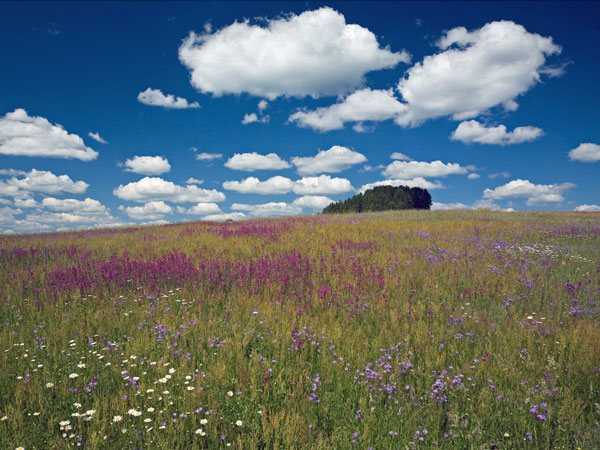

Like a huge carpet of the most unthinkable colors, a huge expanse of fields and meadows spreads.
Once we went to visit distant relatives in a village forgotten by God and people. The road was long. We drove for four hours by car. Outside the window, ancient oak groves flashed, changing places with picturesque meadows. Here and there, among the emerald green grasses, colorful islands of flowering plants could be seen. The bright yellow archipelagos stood out against the background of the azure sky and malachite vegetation. My family was well aware of my morbid addiction to herbs and potions. And when I, having ceremoniously endured an hour and a half away, nevertheless began to scream insanely, demanding an immediate stop - in principle, no one was particularly surprised. Having got out of the car, I entered the very bosom of nature with pleasure and trepidation. She entered - and immediately regretted it. Oyknuv in pain so that even local moths soared in a frantic flock into the sky. I rushed headlong to the car, at the same time rubbing my palms burned with nettles. The husband and daughter laughed furiously as they watched my suffering. Fuck him! - I thought, I still have time to enjoy the beauty of my native space.
Having arrived to our relatives and having gone through all the traditional procedure of true Slavic hospitality, which lasted for three hours, we walked in a friendly detachment to the bride show in the countryside. Oh, and the beauty is spread out in front of us! Lilac curls of ivan-tea, red poppies, white sun of daisies. And all this against the backdrop of a riot of herbs. Truly - a picture worthy of the brush of the most famous landscape painters. And here again they are - golden curls of a plant unknown to me. Not obeying the warnings, with which our guide Pashka, a smart boy of 12 years old, generously convinced me, I rushed into the arms of, as it turned out, goldenrod.
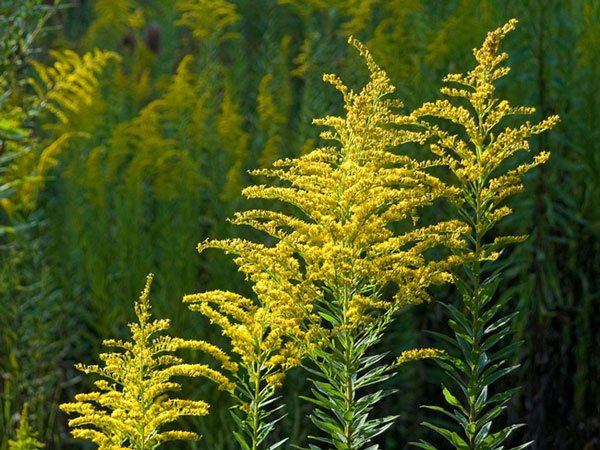

Golden curls of a plant unknown to me
She rushed off and once again regretted her love for nature. Bees! Damn them, along with pistils and stamens. I, of course, have nothing against bees, they are useful creatures. Only fate gave me a terrible allergy to their bites. So I try to stay away from them. But they seem to like that goldenrod very much. They swept it from all sides, fly, buzz. Good honey plant, you see. It is not surprising - two-meter erect stems are crowned with lush yellow clusters of small fragrant flowers. I could not overcome my addiction to beauty. Gently brushing aside the annoying buzzing creatures who were striving to make a sharp dive on my bodies, not protected by clothes, she picked up an impressive armful of this same goldenrod and with a contented look stomped to the house.
Imagine my surprise when Aunt Yanina almost started driving me out of the house with a broom. Like - "This infection is not enough for us, so you also drag it into the house!" It became interesting to me that these beautiful flowers fell into such a disfavor with the local population. In general - I went to google. And I google, I can tell you, very interesting things. It turns out that Canadian goldenrod is considered almost one of the most vicious field weeds. The people call it - the bag. To say that this plant is not typical for our latitudes is to say nothing. Even 30 years ago, you hardly saw the Canadian "infection" in the vast meadows of our homeland. It's all the fault of the flower growers.Painfully they liked the sunny curly inflorescences of this overseas diva. So they began to grow it in flower beds and flower beds. But they did not take into account one thing - the broomstick perfectly adapted to our climate and began to actively reproduce, filling the territories that used to be the favorite place of our native flowers and grass.
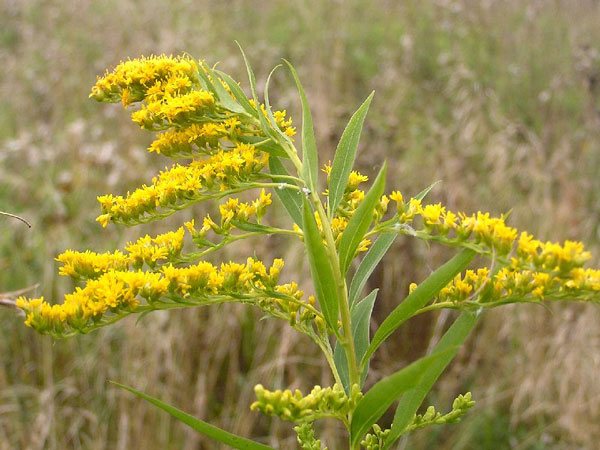

One of the most vicious field weeds is Canadian goldenrod.
It seems to be not scary at all, especially since goldenrod and honey plants are good, and in medicine it is widely used as an antibacterial and pain reliever. But with traditional medicine, business did not work out. But this can be explained by the fact that our ancestors simply did not know about its existence. And it looks beautiful on the flower beds, and cemeteries are planted with them - it does not require much care. And they shove him into fashionable ikebana. Well, just a treasure and not a plant. Only now he has too many seeds, they are quickly carried by the wind. And if a seed falls into the fertile soil, it will definitely take root. This is where the trouble begins. The roots of the Canadian goldenrod have the ability to produce special substances - inhibitors that completely survive other plants from their legal footage. As a result, midges with insects stomp behind them, small animals and field birds that feed or live surrounded by other field thickets. So the bag fills everything that is possible, changing the native spaces beyond recognition, displacing the wild rosemary, bells and St. John's wort from them.
Fields and forest edges, ravines and swamps, clearings and wastelands - everything is covered by this malicious invader, which does not leave the slightest chance for the traditional plants of our latitudes. It is especially dangerous for forests - all the same inhibitors will simply destroy trees and forest grass cover. Accordingly, the forest animals are left without a livelihood. And now the most important thing is that it is extremely difficult to fight this silent occupier. Herbivorous creatures do not chew it - either they are afraid, or they are not tasty. It is also neither theoretically nor practically possible to mow with a scythe, like Yas stables - the overseas infection has taken up too large open spaces. Perhaps with the use of a special technique. And even then it is not a fact that it will be possible to stop the invasion of these green aggressors. After all, stray flower growers continue to grow them in their personal plots, in spite of the pleas of the aborigines, to whom this goldenrod has already eaten into their liver. They planted something, admired the flowers and left. And the inhabitants of the surrounding territories then neither save hay, nor graze domestic animals. In a word, a disaster.
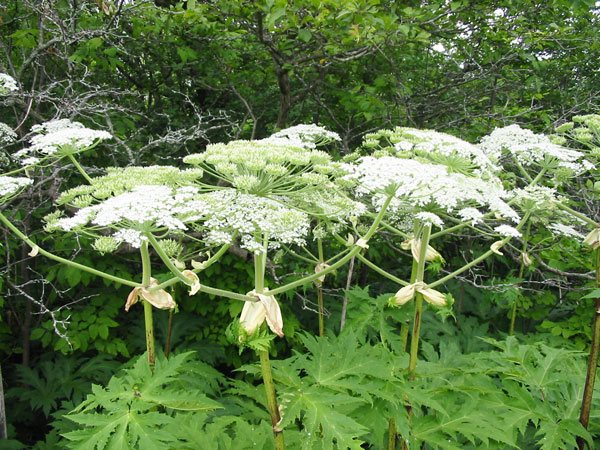

The cow parsnip occupies not only the area, but also poses a threat to human health.
I read all sorts of horrors, and went to chat with my aunt. And she told me that it is not only the bag that gives them trouble. In recent years, many plants have appeared, previously unknown, which not only occupy an area, expelling the usual flowers and potions, but also pose a great threat to human health. Here, for example, a cow parsnip. At first glance, the plant is very harmless. Well, it grows along roads and fields. The leaves are huge, curvy. The inflorescences are umbrella-shaped, similar to caraway seeds, only there will be more times in 50. It grows at an enviable speed - the potato would grow like that. So that's it. It often happens that a person who is not knowledgeable, wandering into the thickets of cow parsnip, climbs out of them with terrible burns. Poisonous plant, very poisonous. Initially, Sosnovsky's hogweed was cultivated as a silage culture, but having got used to our climate, it soon left the collective farm fields and spread almost throughout the country and is rapidly conquering new areas. The authorities are fighting as best they can. But, as in the case of goldenrod, so far to no avail.
Another "heavenly punishment" that fell on the niches of the earth is ambrosia. Despite the pleasant name, reminiscent of the ancient celestials, this plant brings a lot of trouble.For this joy, we are very grateful to our brothers, our Americans. The seeds of this "American Dream" came to our country along with grain crops and took root well in a temperate climate. Besides the fact that it is a malicious weed that inhibits the growth of cultivated plants and dehydrates the soil and deprives it of fertilizers, ragweed is also a powerful allergen. During the period of mass flowering of ragweed, the zones of its localization are declared quarantine. Bronchial asthma, hay fever, migraine and urticaria - we get all this, thanks to this, at first glance, a completely harmless plant. The fight against this food of the gods is carried out at the state level, but so far - to no avail.
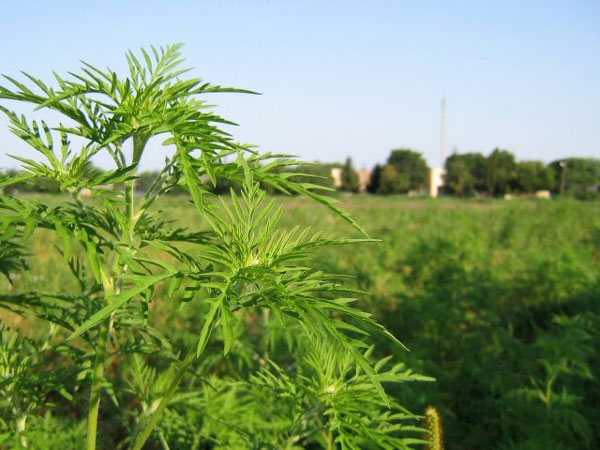

A weed that inhibits crop growth and dehydrates the soil is ragweed.
So it turns out that while admiring the beauties of nature, we often do not realize the danger that all kinds of flowers in the field are fraught with. Even if we are lucky and we stumble upon a plant that is harmless to humans, we shouldn't forget about the harm it causes to the environment. A change in the vegetation cover characteristic of a particular area entails an ecological disaster. And who knows - perhaps our grandchildren will never see the scattering of azure forget-me-nots, purple bells and sapphire cornflowers. They will simply be survived by the foreign green invaders.
Lita Poletaeva
Common goldenrod or Golden rod - description, application, medicinal properties
Goldenrod is an extraordinary perennial plant with an erect, rounded stem and longitudinal stripes. Achieved a length of one meter. The leaves of common goldenrod are alternate, have paniculate branching. The flowers of a yellow plant are collected in baskets, then in a racemose-paniculate inflorescence or simply racemose. The common goldenrod begins to bloom at the end of summer, ends in the middle of autumn. The fruit of the plant is a cylindrical pubescent achene, up to 3 mm long.
What is goldenrod
Goldenrod grows in Europe, Asia, North and South America. It thrives in roadside ditches and fields and is often considered a weed. The plant's yellow flowers bloom in late summer and early autumn. It crosses easily with other plants, which is why there are over 100 different types of goldenrod. Many are believed to have similar health benefits.
Solidago virgaurea - sometimes called European goldenrod - is probably the most studied species for its health benefits. It is used in both traditional Chinese medicine and herbal medicine in some European countries ().
To take advantage of the healing properties of goldenrod, taking into account the contraindications, you need to use parts of the plant that grow above the ground, especially flowers and leaves ().
You can buy goldenrod as a tea or dietary supplement. Tea can have a slightly bitter aftertaste, and some choose to sweeten it slightly.
Solidago virgaurea is a species of goldenrod most commonly used for medicinal purposes. Its flowers and leaves are used to make tea and food additives.


Goldenrod - medicinal properties and contraindications
Useful properties of goldenrod
The plant is one of the best medicines for all human organs, therefore it is highly valued by traditional medicine. With the help of it you can cure dermatosis and other skin diseases, it helps especially well with problems with urination and a pathological condition of the kidneys. Also, if a person is worried about dropsy, the gums constantly bleed. Common goldenrod is one of the best means for stimulating metabolism, it perfectly cleanses the circulatory system, helps to relieve the symptoms of gout. It is especially good to take a decoction of common goldenrod in cases of an inflammatory process of the urinary tract.
Goldenrod is one of the best honey plants and attracts more bees with its bright colors. After scientists studied the plant in detail, it was concluded that it contains a large amount of nutrients.
Traditional healers use for medicinal purposes the aerial part of goldenrod, also the root, rhizome. The herb is rich in flavonoids, alkaloids, essential oils, saponins, resin, chlorogenic, caffeic acid, tannin, resin. Also in the plant there is a large amount of quercitrin, bitterness.
Contraindications
Despite its medicinal properties, goldenrod can cause a number of adverse effects and therefore has certain contraindications.
Generally, goldenrod is well tolerated without serious side effects. However, there are a few precautions to watch out for, including allergies and interactions in people with certain medical conditions ().
Allergies
While goldenrod is sometimes blamed for seasonal airborne allergies, it is not the main culprit as its heavy pollen is not easily carried by the wind. However, it can cause some allergic reactions, including skin rashes and asthma - especially in people working around the plant, such as florists and farmers. Goldenrod can also cause reactions if you are allergic to related plants such as ragweed and marigold (,). Therefore, if you suffer from severe hay fever, taking goldenrod is contraindicated for you.
Also, oral ingestion of the herb can cause itchy skin rashes - although this is rare ().
In addition, goldenrod leaves are rich in latex, a natural source of rubber. People who are allergic to latex - which is used in some medical examination gloves - may find that they are also allergic to goldenrod ().
Medical conditions
If you are taking any medications or have health problems, check with your healthcare professional before taking goldenrod.
Because goldenrod may have a diuretic effect, it should not be taken with prescribed diuretics, as this can result in too much water loss.
For the same reasons, conditions requiring fluid restriction, including some cases of congestive heart failure and kidney disease (), are contraindications to goldenrod consumption. The US National Kidney Foundation recommends that people with any stage of kidney disease, including those on dialysis or having a kidney transplant, avoid goldenrod.
Additionally, goldenrod can force your body to retain sodium, which can worsen high blood pressure ().
Finally, goldenrod is contraindicated in pregnancy and during breastfeeding, as there are no data showing how safe it is in these conditions ().
Goldenrod is generally well tolerated except in cases of allergy. In addition, people with conditions such as kidney disease or certain heart conditions, as well as pregnant or breastfeeding women, should not take the herb.
The use of common goldenrod (golden rod)
Most often, the plant is not completely used, because it has a rigid stem, in cases of full use of goldenrod, you will have to completely thresh the stem after the plant has dried. The inflorescence is recommended to be harvested before it has blossomed, because it can still bloom and will be seeded when cut.
Common goldenrod is one of the best wound healing, analgesic, antispasmodic agents, with the help of it you can cure diseases of the gallstone system, cholecystitis, renal pathologies, and the urinary system.
Outwardly, with the help of a decoction, ulcers, purulent wounds, and boils are treated.The basis of the drug "Prostanorm" is a liquid extract of goldenrod, it is used to treat prostate disease, it is also part of the drug "Cystium solidago" with which you can cure a disease in the urinary tract.
Infusions and decoctions from the golden rod are recommended for use with severe edema, in cases of catarrhal inflammatory pharyngeal process, renal diseases, skin diseases, if intestinal work is disturbed.
With the help of a decoction from goldenrod, you can quickly and painlessly remove kidney stones. In order to prepare it, you need to take one tablespoon of a finely chopped plant, brew it in a glass of boiling water, boil it in a water bath. Insist the broth for up to 3 hours.
With jade, you can take such a decoction, it will require half a liter of boiling water, two tablespoons of finely chopped goldenrod, boil everything in a water bath for up to 8 minutes.
For various inflammatory processes, it is recommended to take infusions; for its preparation, you need to take a tablespoon of goldenrod herb, chop it, pour boiling water over it, leave for up to 8 hours. It is also good to use such a recipe, for its preparation you need to take one tablespoon of the plant, pour a glass of boiling water, leave for about an hour. It is good for them to gargle and gargle the mouth for various diseases that are accompanied by inflammation.
Tea made from a golden rod is very useful and valuable. To prepare it, two teaspoons of the plant are enough, cold water - 300 ml, boil everything, leave for up to 5 minutes. You can immediately pour boiling water over the golden rod, then leave for 10 minutes.
Honey from goldenrod is considered valuable, it can be liquid up to 4 months, dark yellow, light brown, has an unusual bitter taste, while it contains a sufficient amount of useful substances.
Honey is a natural product, with the help of it you can stop inflammation in the renal system, urinary tract, it is also good to use it internally for liver diseases, if metabolism is disturbed, skin diseases.
For liver problems, it is recommended to mix black currant and goldenrod honey. Consume two hours before meals, no more than one teaspoon.
In case of problems with the urinary system, you need to take goldenrod honey - a teaspoon and dissolve in a half glass of water. Take 50 ml twice a day.
In case of kidney diseases, honey must be mixed with lemon juice, add rosehip infusion there, be sure to use it before meals.
The flowers of the golden rod are rich in glucose, xylose, arabinose, galactose, rhamnose. The inflorescence is one of the best medicines for the treatment of dermatitis, cutaneous tuberculosis, burns, rheumatism. Inside, a decoction based on goldenrod flowers is recommended to be taken for hepatitis, cystitis, ulcerative nature.
Transplant and reproduction
Growing goldenrod
Goldenrod propagates by seeds, as well as vegetatively - by parts of rhizomes and green cuttings. Any novice florist can grow a goldenrod from seeds. In the spring, after the last frost, the seeds are sown without pretreatment into the ground.
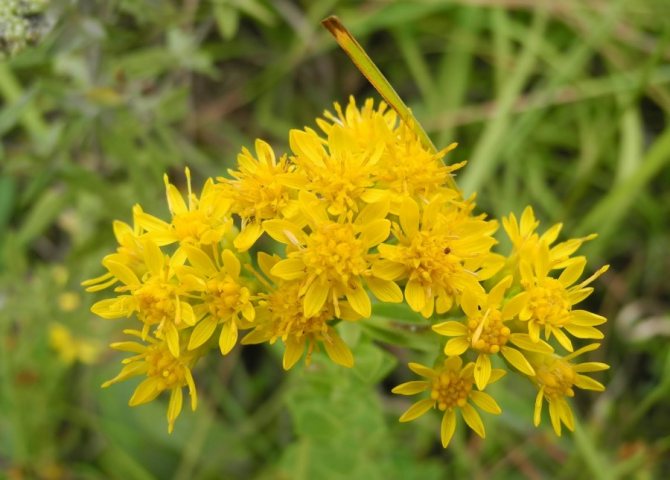

Goldenrod breeding methods
Goldenrod propagates by seeds and vegetatively, parts of roots and cuttings. The cuttings take root without too much trouble. Acceptable planting scheme 20 (30) x70 cm.
Seeds
The seeds of the plant may lose their germination, so fresh seeds that are no more than a year old are used for planting. Seeds are planted in open ground. Sowing is carried out from March to May. Plants must be covered with a film or cloth in a timely manner to avoid damage from bad weather.
Before sowing, the sowing surface is prepared, the heavy earth is roughly dug up in the fall. In the spring, the sowing site is loosened with a cultivator. Immediately before sowing, the soil is leveled with a rake to a depth of 3 cm.Grooves are made along the cord stretched along the flower bed. The seeds are placed in the groove at a sufficient distance from each other. The earth, taken out when digging the groove, is poured into the groove, using the reverse side of the rake, the earth is compacted.
At the end of the work, the planting area is watered from a hose with a fine spray. In small areas, the seeds are best scattered widely and evenly; in large flower beds and on flower beds, sowing in rows is recommended. With any sowing, it is impossible to allow the soil to dry out during seed germination. As soon as the plants sprout and the seedlings can be grasped with your fingers, they are thinned out. Seedlings appear in 16-20 days. In the first year after planting, perennials rarely bloom.
Dividing the bush
Division is an uncomplicated breeding method. A bush is taken out of the ground, cut with a knife or carefully separated by hands. Part of the plant is separated and transplanted to another place. After the first year of growth, the goldenrod appears basal processes, but it is recommended to divide the bush only for 4 years. Division into several segments is carried out in spring or summer. When planting, a distance of at least 40 cm is left between the seedlings.
Rooting cuttings
Rooting cuttings. An apical stalk 10-15 cm long is cut from the mother plant. The upper parts of the stem without inflorescences are suitable for rooting. The section is treated with a growth stimulant. Rooting is carried out in containers or trays with planting soil. The substrate for planting is either bought in the store, or made from equal parts of loose unfertilized earth and sand.
From above, the tray with the handle is covered with a glass cap, jar or transparent plastic wrap, placed in a well-lit, sunny place. Two weeks later, the seedlings grow roots, after another 14-20 days they are transplanted to a permanent place.
Interesting Facts
The medicinal plant goldenrod, the beneficial properties and contraindications of which are discussed below, grows throughout Russia, including in the Caucasus and Siberia. Most often it is found in forests and is an excellent honey plant.
Benefits and medicinal uses
The bright yellow flowers of goldenrod contain a large amount of alkaloids, flavonoids, essential oils, tannins, resins, chlorogenic and caffeic acids. This medicinal plant has a beneficial effect on the entire body as a whole and copes well with various skin diseases, kidney and liver diseases.
Goldenrod improves metabolic processes in the body, cleanses the blood and optimizes its composition. The plant's fresh flowers are used to treat wounds, swelling and ulcers. Tincture of flowers and leaves is used in the treatment of urolithiasis, cardiovascular and gastrointestinal diseases.
In addition, the stems and leaves are used in the form of decoctions, from which preparations are made for rinsing the mouth and nasopharynx.
In folk medicine, goldenrod, or golden rod, is widespread due to its properties that are beneficial to the immune system. On its basis, infusions, decoctions, teas, extracts are prepared.
Goldenrod honey is also very beneficial, especially for kidney and liver diseases. In addition, it raises human immunity and is indicated for use even by young children.
In folk medicine
Decoctions are prepared on its basis. They are most useful for kidney diseases: sand and small stones can be removed from the body. To do this, you need to prepare a decoction in the following proportion. Add 1 tsp to a glass of boiling water. chopped goldenrod herb. Cover and let it brew for 4 hours. Then strain the broth and drink in small sips 3-4 tbsp. l. three times a day on an empty stomach. If you feel the bitterness characteristic of the broth, add 1 tbsp. l. honey and a little lemon juice.
With a disease of the gastrointestinal tract, a decoction of goldenrod, consisting of 2 tbsp, can be an excellent way to fight the disease. l. herbs and 0.5 liters of boiling water. It is recommended to insist such a broth in a thermos.Drink in a course for a month each time a glass before meals.
A wonderful cleansing lotion can be prepared to treat acne and severe purulent rashes on the skin. It is perfect for all skin types without exception. Its mild formula penetrates deep into the pores and significantly reduces acne breakouts in a short time. Those that exist are reduced in size.
For the lotion, you will need dry goldenrod flowers (2 tbsp. L.), They will need to be poured with a glass of boiling water and cooked in a steam bath for 10 minutes. Then strain and cool. Use a cotton pad to wipe your face with lotion along the massage lines. Particular attention should be paid to the place of accumulation of acne.
You can make this lotion regularly and use it as needed. The rest of the time, store in the refrigerator in a dark glass container.
For flux or inflammation of the mouth, you can make a mouthwash. Goldenrod has analgesic and antibacterial properties. Take 1 tbsp. l. dry herbs and brew with a glass of boiling water. Let it brew for 10-15 minutes under a closed lid. Cool to room temperature and strain.
Rinse your mouth every time you experience pain during the day.
During a flu epidemic or acute respiratory viral infection, along with traditional methods of treatment, you can also use teas based on leaves and stems of goldenrod. Such a vitamin and very healthy tea can be an excellent prophylactic agent in the fight against these viral diseases.
To prepare it, take 1 tbsp. l. dry herb goldenrod and add 1 tbsp. l. dry raspberry and black currant leaves. Pour herbs into a thermos and pour 1 liter of boiling water. Let it brew for 2 hours. Strain and add a little lemon juice and honey before drinking.
For prevention, it will be enough to drink tea for 10 days, 2 glasses a day. If the disease progresses, then you should drink this tea three times a day for a week.
It is also important to stay in bed and apply dry heat. Because currant and raspberry leaves create a warming and antipyretic effect, it is advisable to wrap yourself in a warm scarf or handkerchief and sweat thoroughly under the blanket.
Goldenrod herb has antibacterial, disinfectant, analgesic and vasodilating effects, with the result that colds quickly recede.
Decorative, useful and weedy goldenrod: how to grow and how to get rid of
Do you know plants that have so many benefits and harms at the same time? For example, goldenrod, or solidago! I will tell you how to combine all the beneficial and harmful properties of goldenrod in order to enjoy the cultivation of this sunny ornamental shrub. It is impossible not to notice it - bright yellow fluffy panicles are visible from afar. He is a frequent visitor to city and garden beds, and he himself does not hesitate to settle in meadows and forests. The plant is trouble-free, winter-hardy, does not impose special requirements on the soil, for which flower growers fell in love. Known medicinal properties of broths and teas of goldenrod. However, connivance can lead to malicious contamination by goldenrod.
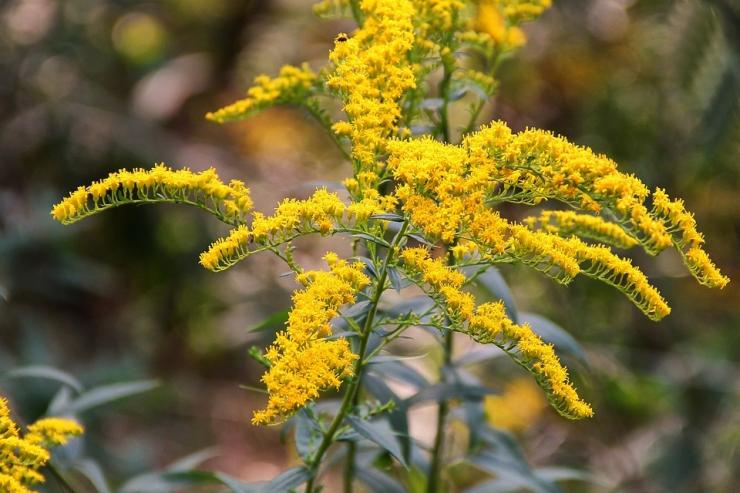

Goldenrod: what kind of plant?
Goldenrod came to us from the North American continent at the end of the nineteenth century.
- At the very beginning of its approval in Europe, only two types were known: giant goldenrod (Solidago gigantea) and canadian goldenrod.
- At first, these objects of the Asteraceae family were perceived as decorative, but they subsequently lost their culture, became wild and adapted to different continents.
There are about 100 species of goldenrod in the genus, with distribution areas in America, Europe, the Mediterranean, Scandinavia. On our territory, its largest areas are in the Caucasus, Western Siberia and Central Asian countries. It is not uncommon in the Far Eastern region.
| Currently, goldenrod is a common ornamental shrub with a herbaceous stem, which habitually takes its place on the sides of roads, in urban flower arrangements, in flower beds in courtyards and gardens. |
Wild species of goldenrod grow freely in almost any place, be it meadows, roadsides or well-lit coniferous-deciduous forests.
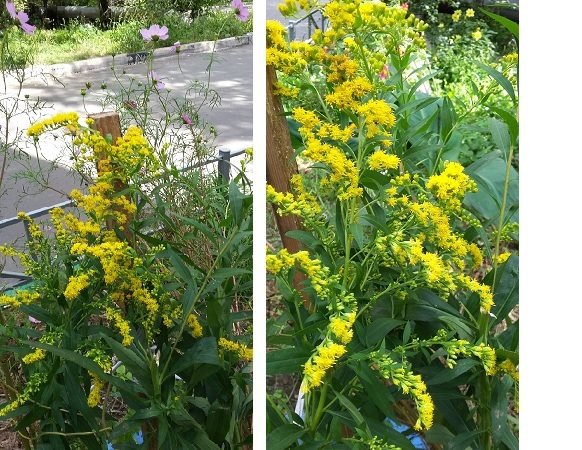

Varieties and types of goldenrod
The following types of goldenrod are best known and widespread:
- Canadian,
- Supreme,
- wrinkly,
- ordinary,
- hybrid,
- daurian.
Goldenrod Canadian
- Originally from North America.
- Very tall, about 2 m, perennial.
- The most commonly cultivated species.
Patio variety - one of the many bred by breeders. It differs from its progenitor: short, does not need support and tying. It goes well with other floral specimens, both in flower beds and in bouquets. In sufficiently lit, drained areas, it will delight you with its lush color every year.
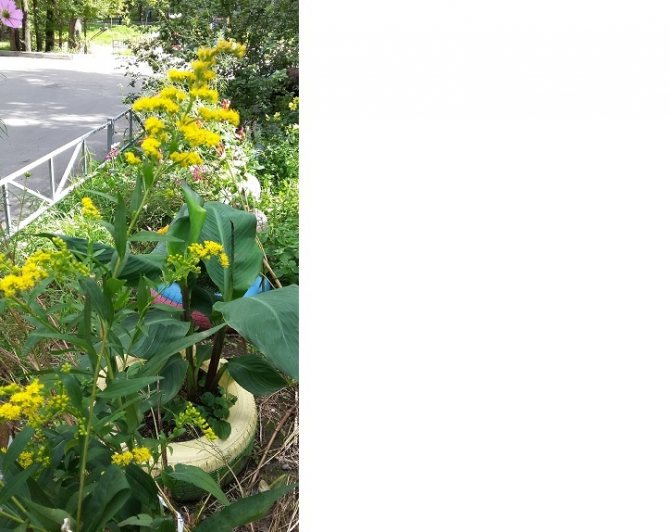

Photo - Canadian goldenrod adorns many yards of Khabarovsk residents
Goldenrod the Highest
It has long been known as an independent species, but now it is approved as a subspecies of the Canadian relative.
- Most often found along the edges of roads, in meadows and open forest areas.
- Tries not to populate shaded areas.
- Blooms for a long time: August-October.
Unlike other species, it has a pubescent stem and one-sided inflorescences of small lemon-yellow flowers, which is very attractive to bees, wasps and even flies. One of the first to be cultivated in garden culture.
Goldenrod rugose
Occupies humid areas everywhere. Blooms in September.
Characteristics:
- shoots with a reddish-brown tint,
- flower baskets are medium-sized, yellow,
- the components of the drooping inflorescence in the form of arched ears.
Daurian goldenrod
- Our "compatriot", originally from Siberia.
- Grows up to 1 m.
- Has narrow panicle inflorescences or just a brush.
Common goldenrod
It is also known under another name - a golden rod, for a rod-shaped, rod-like type of stems. Under this designation, this type is used by knowledgeable herbalists.
- It is ubiquitous in non-thickened forests, slopes with a predominance of sandy soils.
- In the likeness of the plant itself, the inflorescences have an elongated racemose erect shape.
- Wonderful honey plant and pergon plant.
- Pets are completely ignored.
In official medicine, it has not found any special use, with the exception of the medicine Fitolysin and Cystium. In folk medicine, it is used in many ways: as an anti-inflammatory, wound healing, homeopathic remedy.
Photo: all types and varieties of goldenrod have medicinal properties, except for decorative hybrid
Goldenrod hybrid
The most preferred view for amateur flower growers and breeders. Got its origin from the Canadian type. There is a wide variety of varieties of various heights (from 30 cm to 2 m), the shape of the inflorescences, and the timing of flowering.
The most popular varieties:
- Golden Dwarf,
- Golden Moza,
- Goldstral,
- Kronenshtral,
- Golden Gate.
It is very successfully selected at the Graduate School of Horticulture near Stuttgart. About 20 varieties are tested there every year.
| One of the achievements of florists is the creation of a hybrid of goldenrod with aster - a solidaster, characterized by large flowers and a powerful inflorescence |
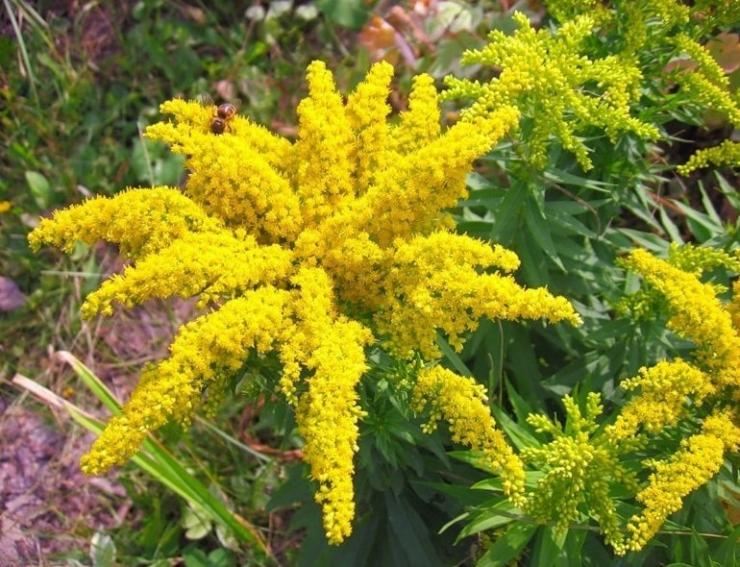

Photo - Goldenrod hybrid
Growing goldenrod
Solidago is cultivated as a perennial plant. It grows from 0.5 m to 2 m in height, depending on the species, varietal characteristics and environmental conditions. Its most prominent organ is the inflorescences-baskets, the groups of which are made up of brushes or racemose panicles.
Landing place
- Solidago grows successfully in partial shade, although it loves sunny places more.
- Feels good in drained areas.
- However, it often takes up heavier soils.
Landing dates
In the first year or two, the bushes bloom, depending on the timing of the transplant.
- The best landing dates are considered first half of May.
- Plants transplanted earlier will give color much later.
Reproduction
Propagated mainly by bush division and offspring, less often by cuttings and seeds.
- Goldenrod seeds have the ability to ripen seeds even in cut plants.
- Achenes are small with a tuft, due to which they are easily transported over long distances, where they germinate, forming new shrub colonies.
| Mowed or plucked plants should be immediately placed in a compost heap, chopped into pieces to prevent contamination with goldenrod. |
Care
With careful care, the goldenrod can occupy a permanent place on the site for 10 or more years.
- An annual spring mineral feeding is required.
- In the spring, all weakened and damaged shoots should be removed to ensure the full development of the remaining ones.
- With a strong growth, the bushes are separated and planted every 3 years, or removed.
- Before winter, it is better to make a complete cut of the ground part.


Photo - Golden bushes are not uncommon in the adjoining territories and in parks
Goldenrod as an ornamental plant
The main advantage of goldenrod is its decorative effect.
- It blooms from July until the end of October, decorating everything around with its sunshine. Flowering is very long.
- When you get closer, you can smell the faint scent of flowers that attracts bees.
- In winter, solidago plants are preserved for a long time in the form of dried flowers.
Solidago looks great in group flower or bush plantings, standing out for its gracefulness, and in the form of hedges, and just ordinary thickets.


Photo - Goldenrod hybrid in a flower arrangement
Goldenrod as a medicinal plant
Goldenrod has found a fairly widespread use in folk healing. It was mentioned in herbal books as early as the 16th century. It is prized for its good melliferous properties.
Goldenrod - medicinal herb
The most popular use of solidago herb for diseases:
- dermatoses and other skin and kidney problems,
- bleeding gums,
- tuberculosis,
- genitourinary system,
- disorders of the gastrointestinal tract and metabolism.
In addition, the analgesic, wound healing and antibacterial properties of goldenrod have been discovered. It is one of the components of the domestic drug "Prostanorm", "Fitolizin" and the German "Cystium solidago".
Goldenrod - honey plant
Goldenrod is renowned as one of the most effective natural nectars.
- Due to the subtle aroma of flowers and brightly colored inflorescences, solidago is considered a good honey plant.
- Beekeepers, whose apiaries are occupied by golden bushes of solidago, receive the honey of the same name, famous for its irreplaceable useful qualities.
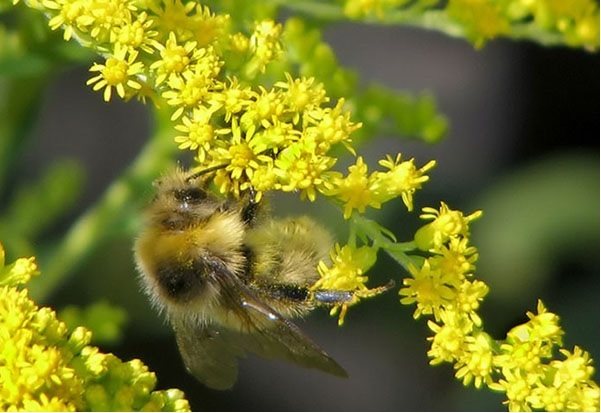

Photo - Solidago is an excellent honey plant
How to properly prepare medicinal raw materials for goldenrod
For medicinal preparations, goldenrod is harvested during flowering:
- Not the entire aerial part is cut off, but only not completely blossoming inflorescences, because they ripen easily and form seeds even when plucked, losing medicinal properties.
- The harvested inflorescences should be carefully washed, collected in small bunches and laid out or hung to dry in shaded places protected from sunlight.
Only fresh flowers are suitable for the manufacture of homeopathic remedies. Sometimes other plant organs are also used for medicinal purposes: roots and stem.
| You should know! Only natural types of goldenrod have healing properties:
Hybrid varieties have only decorative value. |


Photo - Goldenrod herb prepared for drying
How to prepare and take goldenrod
For medicinal purposes, decoctions, infusions and tea from a crushed plant are used.
| IMPORTANT ! Since goldenrod herb contains potent toxic substances, you should only take a drink based on it after consulting a doctor. ! Excessive use can lead to kidney poisoning or pain. ! There are contraindications for use for pregnant and lactating women, children and those suffering from allergic reactions. |
Goldenrod decoctions
- When urolithiasis - 1 tbsp. herbs are poured with a glass of water (approx. 90 ° C) and within 5 minutes. heated in a water bath. The herbal broth is left to infuse for 3 hours and filtered through a fine strainer or gauze into a clean dish. Reception: daily, 3 times a day, 30 ml.
- When renal problems - 2 tbsp. herbs, pour 0.5 liters of boiling water and place in a water bath for 10 minutes, filter, consume 100 ml 4 times a day.
Goldenrod infusions
- 1 tbsp Pour boiling water over dried herbal raw materials (1 glass), leave in a container until cooled, closed. It is recommended to use 50 ml three times a day for a half month. Next, you need a break for 2 months. Then you can continue the treatment.
- To irrigate the throat and oral cavity, a medicinal infusion infused for an hour is used, prepared from 1 tbsp. dry component of the herb and a glass (200 ml) of boiling water. Use after straining.
Goldenrod tea
1. Pour 2 teaspoons (teaspoons) of dry herb into a teapot with 400 ml of cold water, boil, two minutes after turning off you can drink. 2. Add 400 ml of boiling water to a bowl with 2 teaspoons of raw materials and leave for 10 minutes. It remains to strain, and the tea is ready to drink 3-4 times a day.
Goldenrod honey
1. Having mixed it with black currant berries (1: 1), taste (there is no other way to say) a teaspoon 2 hours before meals. Helpful for liver problems. 2. For the prevention and diseases of the bladder, you can dissolve a spoonful of honey in half a glass of warm water. Reception: a quarter glass twice a day. 3. In case of renal diseases, mix honey (about 100 g) at random with lemon juice and rosehip infusion. Recommended to be taken before meals.


Photo - Harvested raw material of goldenrod
Goldenrod like a weed
You should be aware that this herbaceous shrub can cause enormous damage to summer cottages.
The fact is that goldenrod is a stranger, i.e. a species that came to us from the distant American continent, and not so long ago. Foreignness, absence of competing plants and insect pests allows solidago to quickly spread and populate new territories.
| Each goldenrod plant contains about 100,000 seeds with the highest germination and vitality. They are easily carried over great distances. |
What is the harm of goldenrod?
An important factor in the harmfulness of goldenrod is the presence in its roots inhibitors. They strongly inhibit the growth of other plants, up to their complete withering away.
- In places where goldenrod has settled, one can expect the disappearance of forest - chamomile, sweet clover, cornflower - and various garden crops. Even shrubs do not hold on.
- The number of microorganisms, insects, and therefore birds and mammals, is sharply reduced, given the toxicity of this plant. The golden shrub was not to the taste of all domestic herbivores.
- The massive spread of goldenrod leads to a deterioration in the quality of grass in meadows, pastures and hayfields, the composition and structure of the soil can change, and its aeration deteriorates.
_______________________________________________
Another similar plant-aggressor is known - ambrosia.
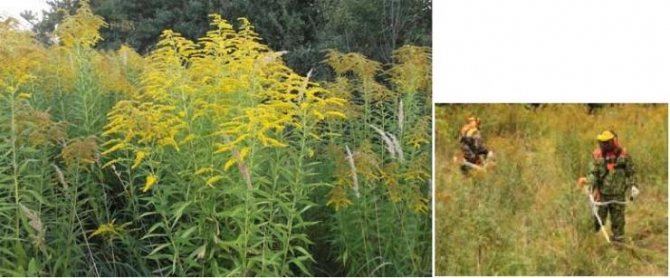

Photo - Goldenrod occupies more and more area on the roadsides
How to get rid of goldenrod?
This type of plant is so tenacious that it is not always amenable to destruction even with large doses of modern herbicides. Moreover, the use of pesticides is unacceptable near settlements and along river banks.
| In many countries, goldenrod is included in the list of quarantine sites that pose a serious threat not only to biodiversity, but also to public health. In China, goldenrod is a real national disaster. |
Control methods
If goldenrod thickets have already appeared:
- Mow 3-4 times a season before the seeds ripen when the plants grow up to 15-20 cm. The entire mowed grass mass should be composted without slowing down.
- A good effect is achieved by digging (plowing) the area with the onset of summer with the simultaneous removal of rhizomes.
- In small areas, mulching the soil with any material is effective.
Prophylaxis
In order to avoid causing harm to your site and areas around, you should carefully approach the placement of goldenrod in your area.
- Thin bushes regularly, cutting out and destroying excess ones. Do this until the seeds ripen.
- Do not leave the thickets unattended.
- Grow hybrid cultivars that are restricted in growth and free of toxic substances.
____________________________________________
Copying of the material is welcomed if there is an active link to the site Antonov Sad
Canadian goldenrod is the most tenacious "saboteur"
One of the scariest species is the Canadian goldenrod. Even with a small number of sunny days per year, it grows up to 2 m in height. One of his "panicles" contains up to 20 thousand seeds and their germination rate is 70-100%, so he has no problems with reproduction.
Scientists note that goldenrod has evolved from a beautiful garden plant to a real "predator". Its root system releases more and more toxic substances, changing the structure of the soil and deteriorating the value of agricultural and garden land. Cattle also does not help in the fight - the aboveground part of goldenrod is also poisonous.
The tactics of capturing new lands from the goldenrod are very unusual. Planted in small groups in villages and summer cottages, the plants grow very slowly at first. Then, at some point, the thickets feel their "strength" and begin to multiply intensively. In woodlands, on neglected summer cottages and old cemeteries, the area of distribution of goldenrod increases by 15-20% per year. If ordinary tomatoes grew the same ...
Control measures: A goldenrod that appears in sight (even if it is not yet in your area) must be immediately destroyed. The most effective method is to mow the plant two to three times a year and then incinerate the residue. This will prevent the plant from blooming, forming seeds, and taking over new territory. Constantly keep the areas of growth of goldenrod under control - you cannot even imagine how tenacious this species is, even a cut plant can "rise" several times per season.
Application by folk healers
Alternative medicine recommends using canadian goldenrod inside and outside, using tinctures and decoctions. In the first case, the plant is indicated for rheumatism, gout, cholelithiasis and indigestion. Regular ingestion of a decoction made from this medicinal herb allows you to remove stones from the kidneys and urinary tract. In this case, the person ceases to be tormented by spasmodic renal pain. In addition, decoctions are recommended for throat treatment, for getting rid of colds, as well as for eliminating bad breath from the mouth.
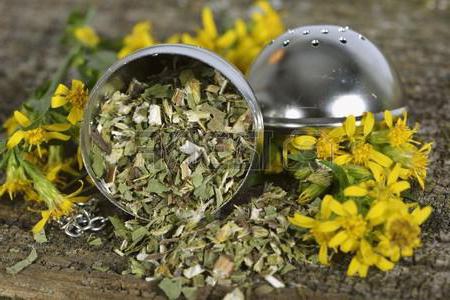

The same drug is used externally. The leaves of Canadian goldenrod are boiled for lotions in the treatment of furunculosis, cuts, poorly healing and purulent wounds. There is another excellent external remedy that allows you to save a person from various skin diseases. These are crushed dry leaves of a plant mixed with cream.
Traditional medicine also uses the essential oil of a medicinal plant. Moreover, it can be used both as an independent remedy, and in combination with other oils intended for aroma lamps, local applications, as well as for massage actions.
Goldenrod photo
Hogweed - a forage crop that has become dangerous
Sosnovsky's hogweed was once imported from the Caucasus (according to other sources - from the United States), it was supposed to be used as a silage crop and fed to livestock. But the poisonous "filling" of the plant had a negative effect on the offspring and it was decided to destroy the cow parsnip. Unfortunately, by that time he had left the experimental plots, and some of his species reached Siberia.
Cow parsnip is dangerous primarily for humans, because upon contact it causes burns (sometimes even 2nd degree), increases the sensitivity of the skin to ultraviolet light, and is also an allergen. Along the way, he displaces useful crops, impairs soil fertility and can live on the site almost forever. Even an uprooted plant manages to leave part of the root system in the soil and start growing again the next year.
Control measures: if individual specimens of hogweed appear on the site or in the field of visibility - it's time to sound the alarm. The main thing is to be in time before the plant inseminates and drops the seeds. It is impossible to give an exact date - each plant has its own cycle and can throw them away at any time.
Before the "fight" wear rough and impervious clothing and heavy gloves. Cover open areas of the skin (it is impossible for the poisonous sap of the plant to get on them - this will cause a burn) and protect your face with a mask. Then take a long-handled shovel and chop the plant at the base a couple of centimeters above the ground. Treat "stump" with herbicides (Tornado or Roundup) or fill with vinegar essence. Place an opaque plastic bag over the tree stump and tie it up. Burn all the felled parts. You can try to completely remove part of the soil at a depth of 10-12 cm in the place where the hogweed grows and replace it with a new one.
If you have not been at the dacha for a long time, but upon arriving, you found a "forest" of cow parsnip - do not panic. The algorithm of actions is the same - the destruction and isolation of each individual plant. You can also cover the mown area with geotextile (covering material used in landscape design), cover it with a 5-7 cm layer of earth, and then sow it with lawn grass or cover it with a ready-made lawn.
Economic value [edit | edit code]
Common goldenrod is known as a good honey plant and pergonos [9], especially in light rainfall [10].
It was used as a tanning and dyeing plant, from the grass and flowers of which yellow and brown dyes were extracted [9] [11].
Diterpenoids have been found in common goldenrod with antifeeding activity against some insects (Cooper-Driver, Gilbian, 1986)
The common goldenrod herb is ignored by domestic animals, although the wild ones seem to be eaten. Some sources indicate the toxicity of the plant [12]. When eaten in large quantities by sheep, their acute poisoning is not excluded, which is expressed in increased excitability (paralysis and death are possible).
Medical Uses [edit | edit code]
Pharmacy name: herb golden rod
- Solidaginis herba (formerly: Herba Virgaureae).
Mr. Dachnik informs: goldenrod - medicinal properties and contraindications
Goldenrod contains aromatic resins, ethers, phenols, flavonoids, bioactive substances, have anti-inflammatory, expectorant, diuretic effects. The benefits of the plant are officially recognized.
In high concentrations, goldenrod is poisonous. It should be used with caution for allergy sufferers. Before treatment, you should consult your doctor.
Goldenrod has contraindications: liver and kidney disease, systemic heart disease, thyroid gland. Self-medication can cause a lot of irreparable harm to the body.
Raw materials are collected in the flowering phase; leaves, flowers, soft shoots are used for treatment. Herbal raw materials are used for infusions, decoctions, preparation of extracts. They heal wounds, get rid of acne, peeling skin, treat people and animals.
"Crazy Cucumber" - a lover of water and new lands
The spreading speed of lobed echinocystis is faster than that of hogweed and goldenrod. This liana-like plant was actively used as an alternative to grapes when decorating buildings. Having left the "captured" areas, Echinocystis took a fancy to the areas near water bodies and began to envelop everything around.
"Crazy Cucumber" spreads from south to north upstream of rivers. A few years ago, he was met mainly only in warm and humid regions, but now it turned out that he is not afraid of frosts, barren lands, and the proximity of water does not allow him to actively poison the plant with herbicides. When ripe, the fruits, similar to small thorny cucumbers, explode and throw seeds 6-8 m around. Therefore, if this season a neighbor decorated the arch with echinocystis, get ready for the fact that next year an uninvited guest will appear with you. The main harm is abundant growth, which suppresses the development of other crops and strongly shades the site.
Control measures: It is easiest to deal with a mad cucumber when the stuffed fruit seeds have not yet formed. The fact is that during the period of ripeness, it shoots out seeds from the slightest touch and the breath of the wind. But while there are only flowers on the liana, it is easier to deal with it - it is enough to weed out, mow and burn the remnants.
Honey plant
How else can canadian goldenrod be applied? The plant is distinguished by a high content of nectar in its flowers, which is produced throughout the day. For the entire period of its flowering, which is about two months, bees are able to collect up to 100-150 kg of honey from one hectare. This product has a tart taste and a bitter taste. Its color is dark brown. Honey in its liquid consistency is stored for no more than 1-2 months. After that, it crystallizes.
Goldenrod honey is also used in folk medicine. After all, this beekeeping product has many medicinal qualities, which are due to the presence of nutrients in the plant itself. In addition, the nectar processed by the bees becomes even more valuable. Goldenrod honey has antimicrobial and anti-inflammatory effects. Its use helps to fight kidney diseases and diseases of the urinary tract. In addition, this valuable beekeeping product helps with dermatitis and eczema. Its use allows you to strengthen the immune system, as well as have a positive effect on metabolic processes.
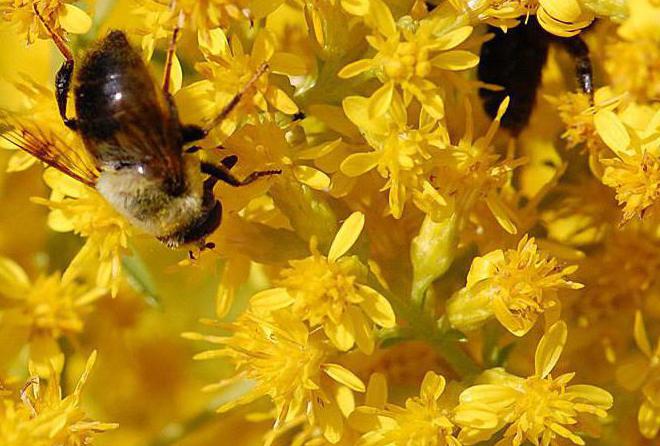

Traditional healers recommend such honey not only orally. It can also be used in ointments and compresses. Such its use can heal eczema, edema, dermatoses, long-term healing wounds, as well as skin irritations.
Honey also has a beneficial effect on the digestive, cardiac and nervous systems. This product is also considered an excellent remedy for the treatment of sore throats, meningitis, rhinitis and sinusitis.
Artemisia ragweed - a product of global warming
This annual plant, which was previously found in the southern and mountainous regions, reaches a height of 100-150 cm in just a few months. It is classified as a quarantine weed, which in a short time is able to suppress cultivated plants, thanks to a developed above-ground and powerful root system.
Ambrosia is an incredibly voracious and voracious plant. To produce 1 kg of dry matter, the plant removes from the ground almost 950 liters of water, 15.5 kg of nitrogen and 1.5 kg of phosphorus, depleting the soil and preventing the growth of cereals and other crops. During the growth period, it shades other plants, and causes severe allergies in humans.
Control measuresThere are three main ways of fighting: biological, agrotechnical and chemical. To implement the first method, which is effective only in the early years of ragweed, it is necessary to use crops that suppress its growth: legumes, cereals. You should also attract leaf beetles and scoops that feed on this weed.The agrotechnical method of protection consists in observing crop rotation, tillage and timely uprooting of weeds before seed formation begins. The effectiveness of chemicals against ragweed (Caliber, Prima, Granstar, Lauren, Roundup, Hurricane Forte, Glysol, Glyphos, Tornado, Kosmik, Dominator, Clinic) remains relatively low and gives results only in the early stages of plant development.
Related Videos
62. ZOLOTARNIK - medicinal properties and benefits in the area Goldenrod Useful properties
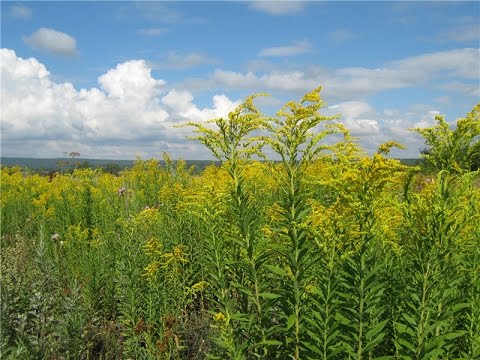

Goldenrod Canadian - Medicinal Properties. Medicine "underfoot" Canadian Goldenrod Goldenrod is a dangerous plant for the garden! X
What it looks like and where it grows
Goldenrod is common in the European part of Russia, but is found practically throughout the entire territory of the Eurasian continent. It is also common in western Asia. It is quite simple to distinguish common goldenrod and Canadian goldenrod from other species. All you need to know is the botanical characteristics of the plant.
- The rhizome is short, not buried, of the rod type.
- Stems are straight, can reach a height of 30 to 80-100 cm.
- Leaves are elliptical or ovoid, stem, arranged in the next order.
- The flowers are yellow, small, collected in baskets, forming long paniculate inflorescences.
Goldenrod is an unpretentious plant, but it loves moisture and an abundance of sunlight. Flowering begins in late spring and continues throughout the warm season, until mid-September. By the end of September, flowering ends, and paniculate inflorescences are covered with small achenes - fruits with seeds, from which you can grow a medicinal plant in your garden, if you have time to collect them before the onset of rains.
Views
There are over 30 varieties of goldenrod that are found in various regions of the Eurasian continent. But only 2 types are of medicinal value, since they have a rich composition, in comparison with the rest.
- Goldenrod canadensis is a tall herb with thin straight leafy stems and yellow paniculate inflorescences.
- Common goldenrod - popularly known as the "golden rod". This is a tall plant with yellow paniculate inflorescences, consisting of small flowers-baskets.
Plants of these species have not only a pronounced therapeutic effect, but also contain toxic substances in their composition. Therefore, it is necessary to be treated carefully, observing the dosage.
Collection and storage
In order to prepare goldenrod medicinal raw materials for future use, you need to know the basic rules. Goldenrod can be harvested in regions that are distinguished by an impeccable ecological situation. It is forbidden to collect in places where there are nearby toxic enterprises and factories. Also, do not collect grass in the roadside area, where it accumulates dangerous toxins contained in exhaust gases, as well as heavy metals that have a pronounced carcinogenic effect.
In order for the resulting medicinal raw material to be useful, you need to know when the maximum concentration of active substances accumulates in the plant. It is possible to collect the medicinal raw material of goldenrod twice a year.
- In the first half of August, the peak of flowering is observed - this is the most suitable time to harvest goldenrod inflorescences.
- At the end of September, active substances in the highest concentration accumulate in the rhizome of the plant. This is the perfect time to dig and harvest the rootlets.
There is no point in collecting goldenrod grass - it contains a minimum amount of valuable components, besides, after drying, it becomes woody, as a result of which it is difficult to boil or evaporate useful substances from it. Therefore, it is worth cutting off only the inflorescences. After cutting off the tops, it is necessary to form small bundles of inflorescences, tie them up in the attic or under a canopy and dry for 2 weeks. Completely dried raw materials must be packed for storage. You can use two methods.
- Grind the inflorescences and place them in a tin or glass jar, then close it tightly and leave in a dry, cool room with normal air humidity.
- You do not have to grind the plant raw materials, but pack them in fabric bags and also store them in a dry, cool room.
The shelf life of raw materials directly depends on the conditions. If the air temperature is from 5 to 25 degrees, and a stable level of humidity is maintained (about 50-60%), then the obtained raw materials can be stored for 2 years. If the humidity is higher or the air temperature is unstable, the raw materials may deteriorate earlier. The best option is the annual procurement of fresh medicinal raw materials.
Botanical characteristic
All numerous representatives of the genus are rhizome herbaceous perennials with strong erect stems. The height of the stems ranges from half a meter to two. The arrangement of leaves on the stem is alternate, the leaf blade is whole, lanceolate, the edges of the leaf are more or less finely serrated.
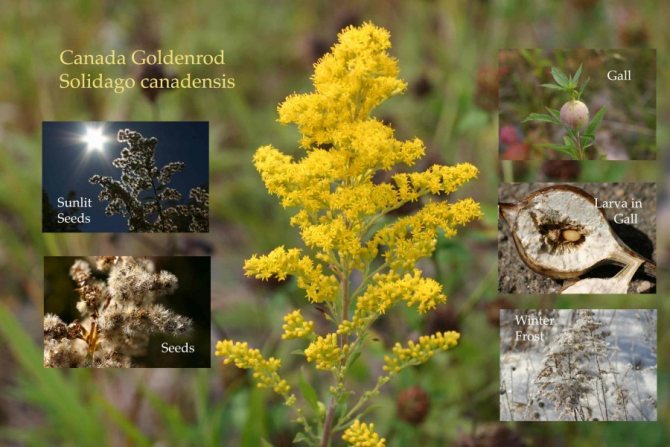

Flowers are yellow, small, usually very numerous, collected more often in a loose inflorescence panicle, less often in a raceme or scutellum. The root system is powerful.
The solidago species is usually easy to recognize by their characteristic golden inflorescences, and the goldenrod variety can be identified from the photo.
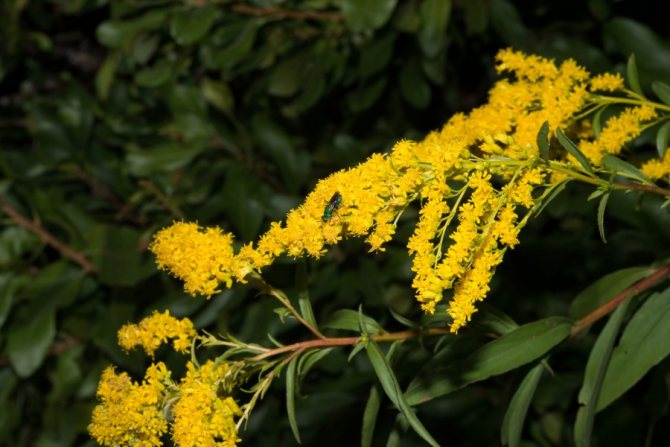

Features of goldenrod
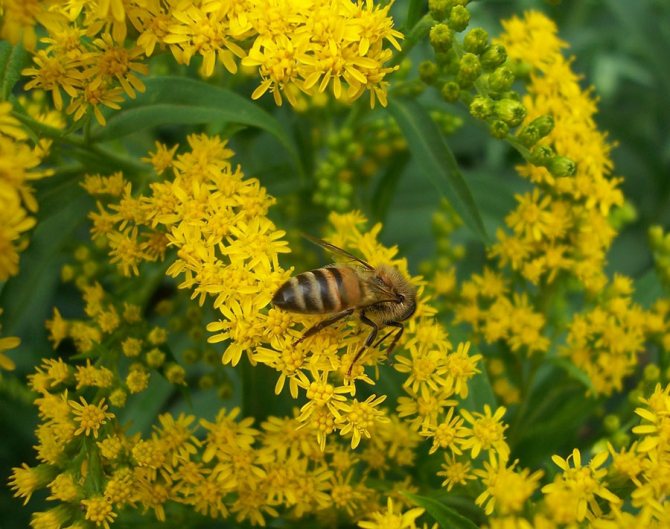

Goldenrod is a hairy or bare herbaceous plant. On erect shoots, there are alternately arranged leaf plates with a serrated or solid edge. The shape of the inflorescences can be racemose, paniculate or corymbose; it includes many baskets. In these baskets, the pistillate marginal flowers can be colored in various shades of yellow, in some cases they are very small, which is why they simply cannot be seen from under the ciliated edge of the wrapper. The disc contains bisexual tubular flowers with a yellow corolla. Flowering is observed at the end of the summer or beginning of the autumn period.
Common goldenrod
Common goldenrod, or golden rod (Solidago virgaurea) is a perennial herb from the Aster family with a short woody rhizome. Stems are erect, often unbranched, leafy, up to 100 cm tall. The leaves are alternate or ovate, pointed, serrate along the edge, basal and lower stem leaves are narrowed into a winged petiole, the upper ones are smaller, sessile. The flowers are yellow, in small (up to 15 mm) baskets, collected in a racemose or paniculate inflorescence. Fruits are cylindrical ribbed achenes with a brownish tuft. Blooms in August - September.
It is found throughout the European part of Russia, except for the Far North, in the Caucasus and Western Siberia. It grows in light forests, along forest edges, clearings, clearings, among bushes, in meadows. Prefers soils that are not heavy in texture. In Eastern Siberia and the Far East, it is replaced by closely related species - goldenrod dahurian (Solidago dahurica syn. Solidago virgaurea var. Dahurica) and descending goldenrod (Solidago decurrens), which can be used in medicine due to a similar chemical composition on a par with the main species.
The upper part of leafy shoots, harvested during flowering, is used. It is not at all necessary to grow goldenrod on the site, you can simply collect and dry the upper parts of the shoots with inflorescences in late July and early August. Dried in the shade, laid out in attics or in a dryer, at a temperature not higher than + 35 + 40 ° C. Homeopaths use inflorescences.
We use it in folk medicine and harvested wild. Included in the Pharmacopoeia of Germany and some other countries.
Properties and application goldenrod
Chemical composition: organic acids, diterpenoids, 2.4% saponins, phenolic compounds, phenol carboxylic acids and their derivatives (caffeic, chlorogenic, hydroxycinnamic), up to 012% flavonoids (rutin, quercetin, etc.), coumarins, essential oil.
Pharmachologic effect. It has a strong diuretic effect, it is used for diseases of the kidneys and bladder, especially often for urolithiasis. At the same time, along with a diuretic effect, it exhibits anti-inflammatory and strong antibacterial properties. Contained flavonoids reduce capillary permeability. Effective for urate and oxalate stones. Contraindicated in phosphate stones, as it increases the pH of urine. It is very effective in chronic prostatitis, cystitis and urethritis. Sometimes it is used in fees for impotence and prostate adenoma. Due to its antifungal action, it is effective against candidiasis, and in common parlance - thrush.
In folk medicine, it is used for cholelithiasis, indigestion, rheumatism, gout, associated with impaired uric acid metabolism. Outwardly, fresh leaves are used for boils and boils. In Germany, it is sometimes used for diseases of the veins, which is probably associated with a high content of flavonoids and a pronounced anti-inflammatory, vaso-strengthening and antioxidant effect.
Goldenrod breeding methods
The grass is planted with seedlings. Before the onset of cold weather, not all seed pods ripen, so you need to be prepared for low germination of seeds collected in autumn. Cultivation begins at the end of March. If you move the sowing dates to February, you can achieve flowering in June.
The seeds hatch after 15-20 days, the germination temperature is from +10 ° C to +22 ° C. For planting, choose partially shaded areas, sheltered from the wind - some varieties are prone to lodging. Young plants are planted at a distance of 40 cm. Goldenrod is not picky about the ground, but abundant flowering, lush inflorescences are achieved with proper agricultural technology.
Using goldenrod
Goldenrod is suitable for use in landscaping. Hybrid varieties of goldenrod are more suitable for a combined flower bed, since they do not give self-seeding and do not oppress neighboring plants. They are used in mixborders, ridges, rock gardens and rockeries. Yellow bushes are good in the vicinity of conifers, as well as flowering phlox, sage, asters. This beautiful honey plant will attract many beneficial insects and butterflies to the site.
Goldenrod looks great not only on the lawn, but also in a vase. The bouquet will last up to two weeks and will spread a pleasant, unobtrusive aroma. Flowers can be used to dry.
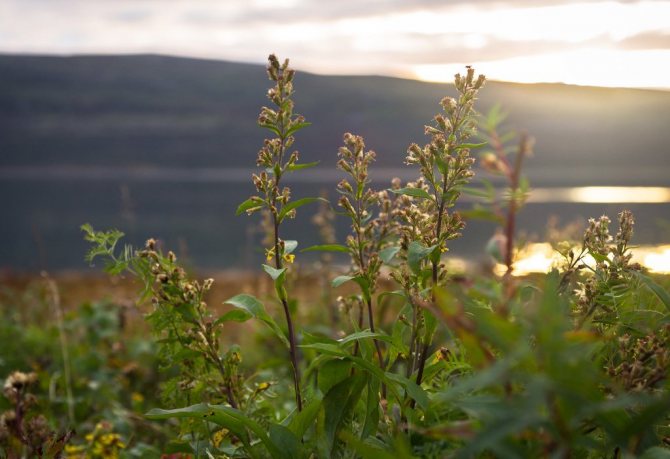

Goldenrod pharmaceuticals
The medicinal herb goldenrod is used for the manufacture of pharmaceuticals "Marelin" and "Phytolysin".
"Marelin" (Marelinum): contains madder dye extract (0.0325 g), canadian goldenrod extract (0.025 g), field horsetail extract (0.015 g), kellin (0.0025 g), corglikon (0.000125 g), salicylamide (0.035 g), phosphate magnesium (0.01 g). It has antispasmodic, diuretic and anti-inflammatory effects. Promotes the movement or spontaneous passage of calculi, reduces pain in renal colic, increases urine output and acidifies urine. With nephrolithiasis, it leads to an abundant discharge of crystals of urinary salts, mucus and pus; normalizes salt metabolism. Indications for use: phosphate and oxalate nephrourolithiasis, including nephrolithiasis, complicated by calculous pyelonephritis, the presence of calyx and renal pelvis stones, ureteral stones of various sizes and localization, condition after surgical removal of kidney stones or their independent discharge; salt diathesis - phosphaturia and oxaluria. "Marelin". Take orally before meals, 2-4 tablets 3 times a day for 20-30 days. Repeated courses in 1-1.5 months. Patients with gastric ulcer and duodenal ulcer take the drug after meals. In order to prevent relapses after surgical removal of the stone or its spontaneous discharge, take 2 tablets 3 times a day for 2-3 months. The course of treatment is repeated after 4-6 months.
Phytolysinum: Contains a condensed extract of wheatgrass, onion husks, fenugreek seeds, birch leaves, parsley roots, field horsetail herb, goldenrod herb, lovage root, and bird bitterness herb. It has a bacteriostatic, bactericidal and analgesic effect. The drug promotes the excretion of sand and small urine calculi, and also prevents an increase in calculi and the appearance of new calculi. Indications for use: inflammatory and infectious processes accompanying urolithiasis. It is also used to prevent recurrence of urolithiasis. Adults and children over 15 years old: take the drug 1 teaspoon of paste, dissolved in half a glass of warm water 3-4 times a day after meals. The course of treatment is from 2 to 6 weeks. If necessary, the course of treatment can be repeated.
"Prostanorm" (Prostanormum): contains St. John's wort, canadian goldenrod, licorice root, rhizome with roots of Echinacea purpurea; the content of ethyl alcohol is not less than 37%; in dropper bottles of 50 ml or dark glass bottles of 50 or 100 ml. Also available in tablets - contains Prostanorma dry extract 0.2 g - in a package of 20 and 30 pcs. It is characterized by moderate androgenic activity, anti-inflammatory, analgesic properties, as well as the ability to improve microcirculation in the tissues of the prostate gland; normalizes urine output. It has a bacteriostatic effect against gram-positive bacteria of the genus Staphylococcus, Streptococcus, Enterococcus. Take 1/2 teaspoon (2.5 ml) of liquid diluted in 1/4 cup of water, or 1-2 tablets 3 times a day 30 minutes before or 40 minutes after meals. The course is 4-6 weeks. A repeated course is possible after consulting a doctor. Do not use for acute glomerulonephritis. Because the drug contains echinacea, the drug should be used with caution in diseases for the treatment of which the use of immunostimulating agents is not recommended.
Contraindications: canadian goldenrod is considered a poisonous plant, it is prescribed in strictly verified doses.
- The golden rod, useful in chronic kidney disease, can be harmful in acute kidney and bladder disease.
- You can not use it with glomerulonephritis.
- Contraindicated in pregnancy.
Spread
The goldenrod is native to North America. Today, the territory of its distribution is quite extensive. You can meet the plant throughout Europe. Huge thickets of goldenrod are also found in America and Asia. At the same time, wild and cultivated species are distinguished.
The plant prefers light sandy soils in well-lit areas. Canadian goldenrod is often found on forest edges. It also grows along roads, as well as near houses in rural areas. Gardeners consider it to be an unpretentious flowering plant.
Names [edit | edit code]
The scientific generic name of the plant comes from lat. solidus is strong, healthy, according to its medicinal properties, and the species is from lat. virga - twig and lat. aureus - golden (according to the color of the flowers in the inflorescence), that is, a golden branch, which fully corresponds to the trivial Russian name - the golden rod. [2] [3].
Annenkov N.I. in the Botanical Dictionary (1878) in an article about the common goldenrod gives the following common and book names used in different regions of Russia, indicating the place where these names are found, and the persons who recorded these names in print or in writing, as well as the existing names of this plant among different peoples who lived in Russia, and the names in German, French and English:
Solidago virgaurea
L
... Farm. name Virgaurea s. Consolida sarracenia (Hb.) Bloshnik (Grave) Vinokur (Nizheg.) Voronets (Fire) Grabki (Mog.) Zheltotsvѣt (Fire) Yellow (TV) Jaundice (Olon) Zhetokrug (Grave) Zhovtobryukh (Kiev .) Zheltushnik-chaek (TV. Ost. Pup.) Life-giving tr. (Perm. Lep.) Zheleznyanka upland (Vyat. Meyer.) Hare down (Uf.)Golden twist (transl.) Golden feather (TV) GOLDEN ROGA (Sobol. Lane. Zolotarnik (Dv.) Zolotoen (Sl. Church.) Zolotushnik (Sobol. Polt. New) Gold (Ukr. Cal.) Kostovyaz (Pet.) Rubella (Psk.) Marten (Olon.) Kunnik (Grave) Deciduous (Volog.) Medovik ( Cat. Sѣnn.) Shootout (Grodn.) Poletukha (Grave) Empty (Fire) Down (Vit.) Borovoy down jacket (Vlad.) Consumable (Thief) Shot (Lower) Rod (Mog. Per.) Soup ( Minsk.) Strѣlnik (Grodn.) Smertѣlnik (Psk.) Sudapor (Raven) Tobacco lѣsnaya (Grod.) Black grass (Uf.) Ugadnik (Mog.) Deaf tsykor_ya. Wild tsykoria (Minsk.) Tsvѣtochnik (Tul.) -
Floor
... Nawłoc. Glowienki czerwone. -
Puddle
... Złotnička, Złotowy prut.
Rach
.
Ymer
... Chichistavi. -
Est
... Woolmete rohi. -
Fin
... Keltainenkukka. -
Him
... Gemeine Goldruthe. Goldens Wundkraut, Heidnisches Wundkraut, St. Petersstab, Magdhelle, Federkraut. -
Franz
... Verge d'or, Herbe des Juifs, La Gerbe d'or, la Doree. -
Eng
... Golden-rod. Consound of Saracens. Consumed with diseases of the urinary organs and stones in the kidneys and bladder, also with the treatment of wounds.
Dahl's dictionary contains the following synonyms for this plant: goldfinch, scrofula, bone bony, life-giving, iron ore, centaury, seagulls
.

